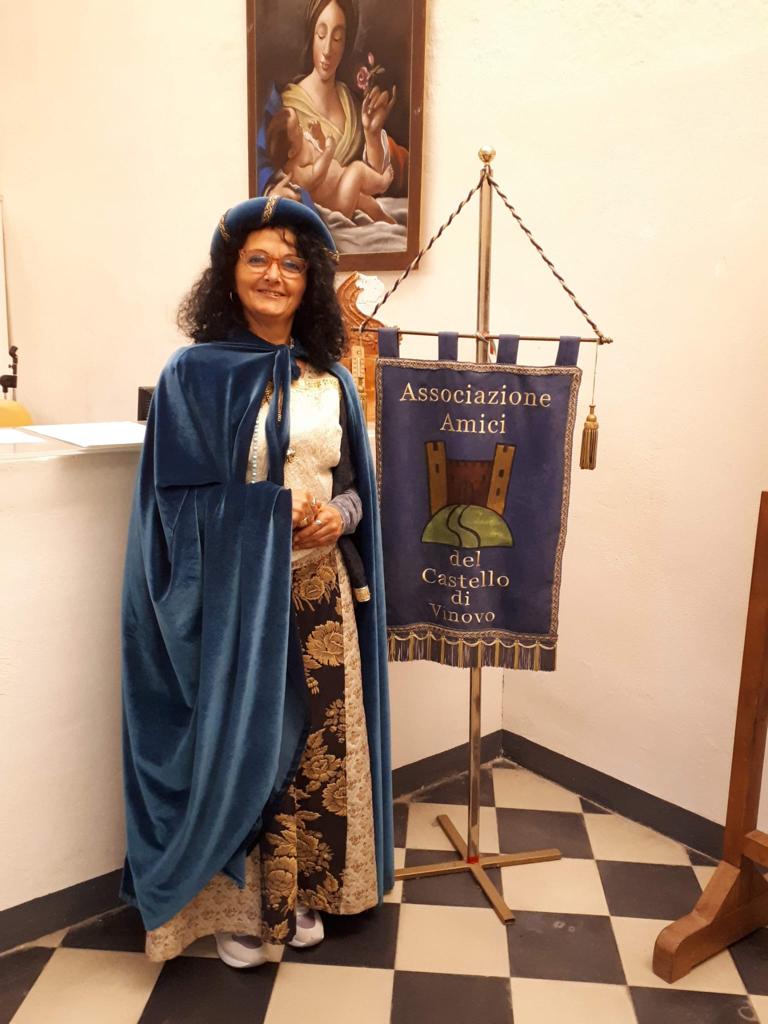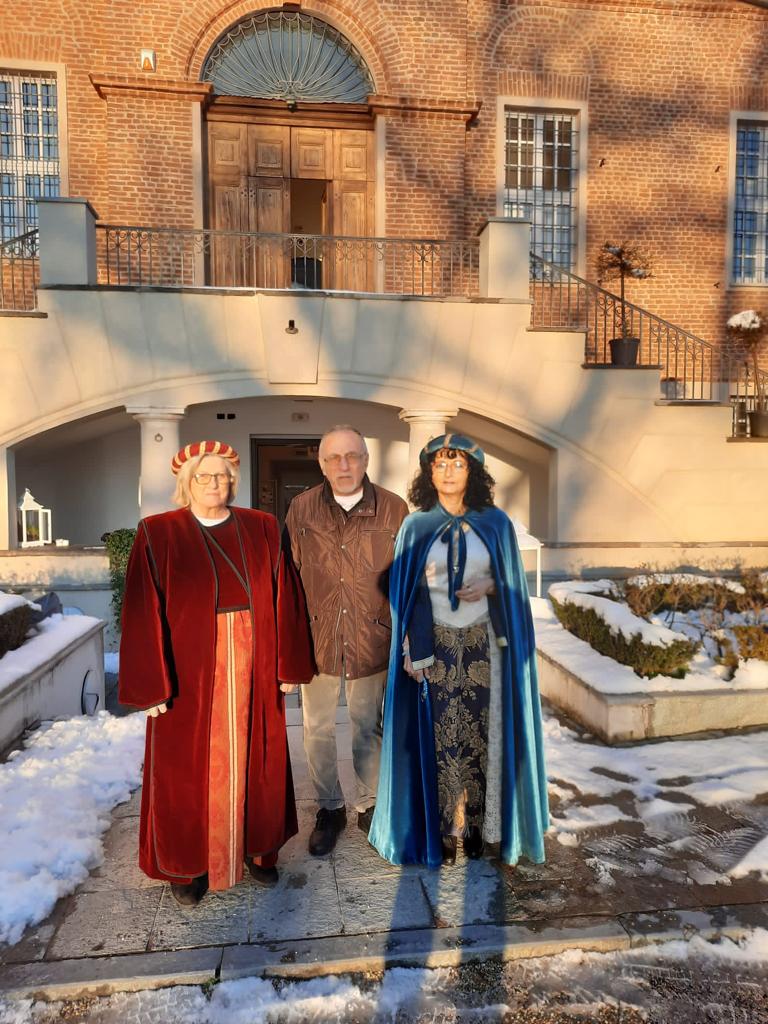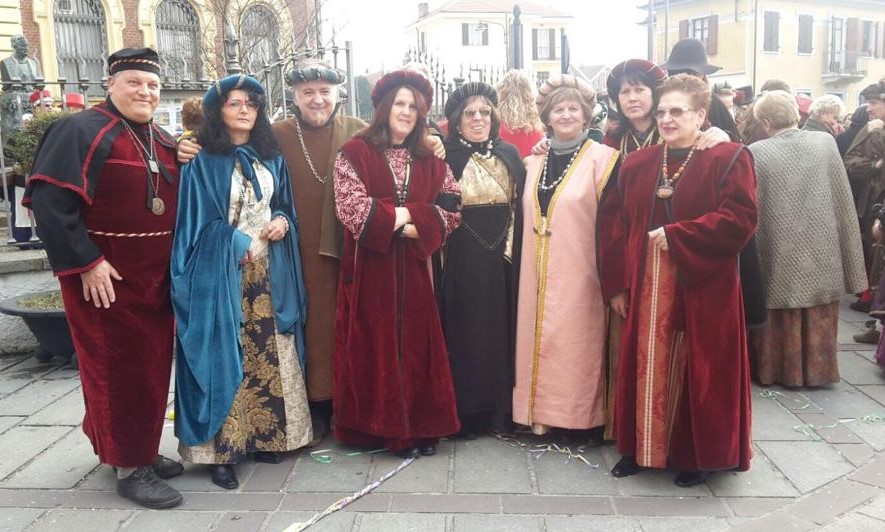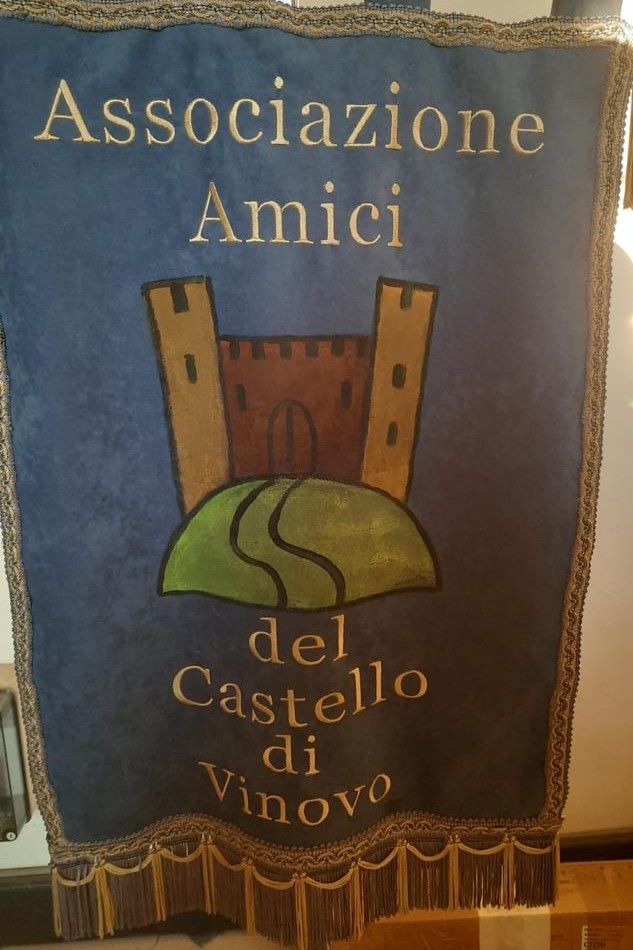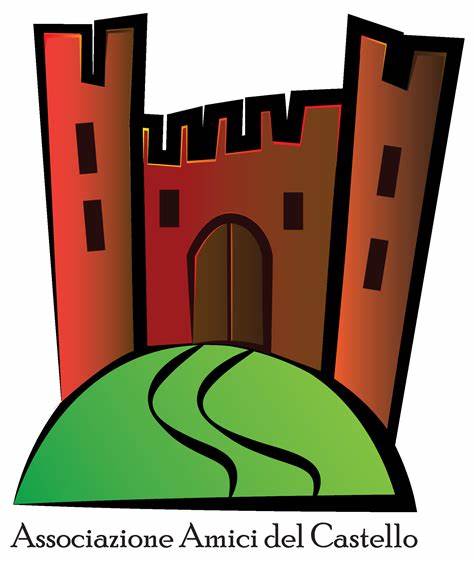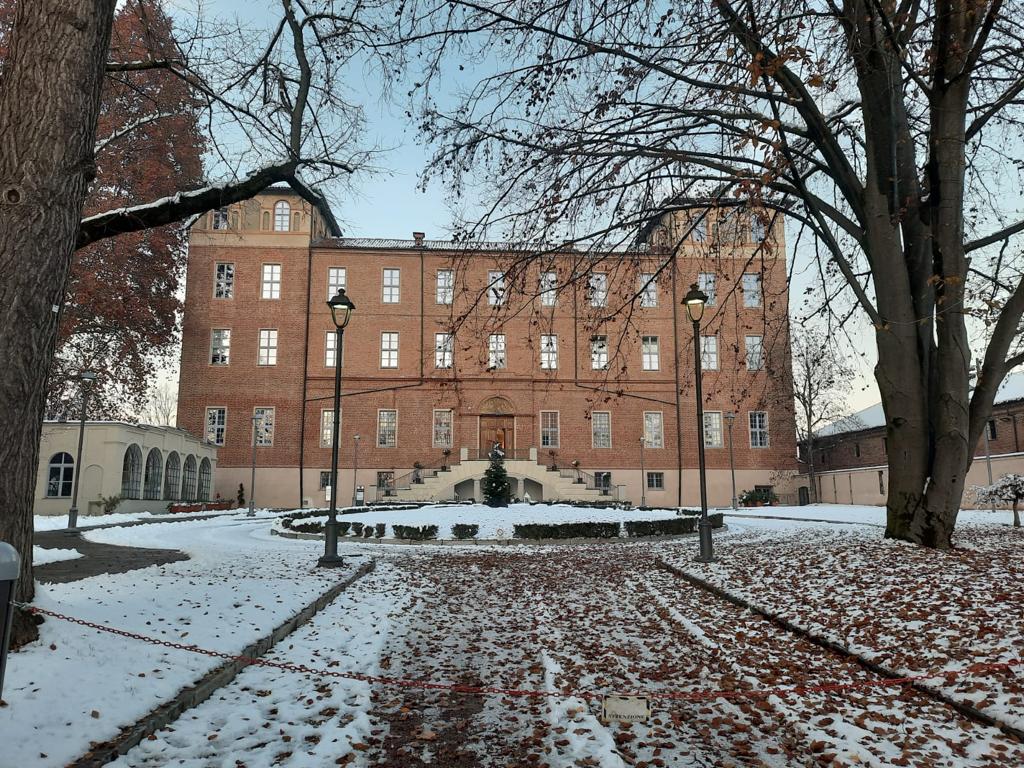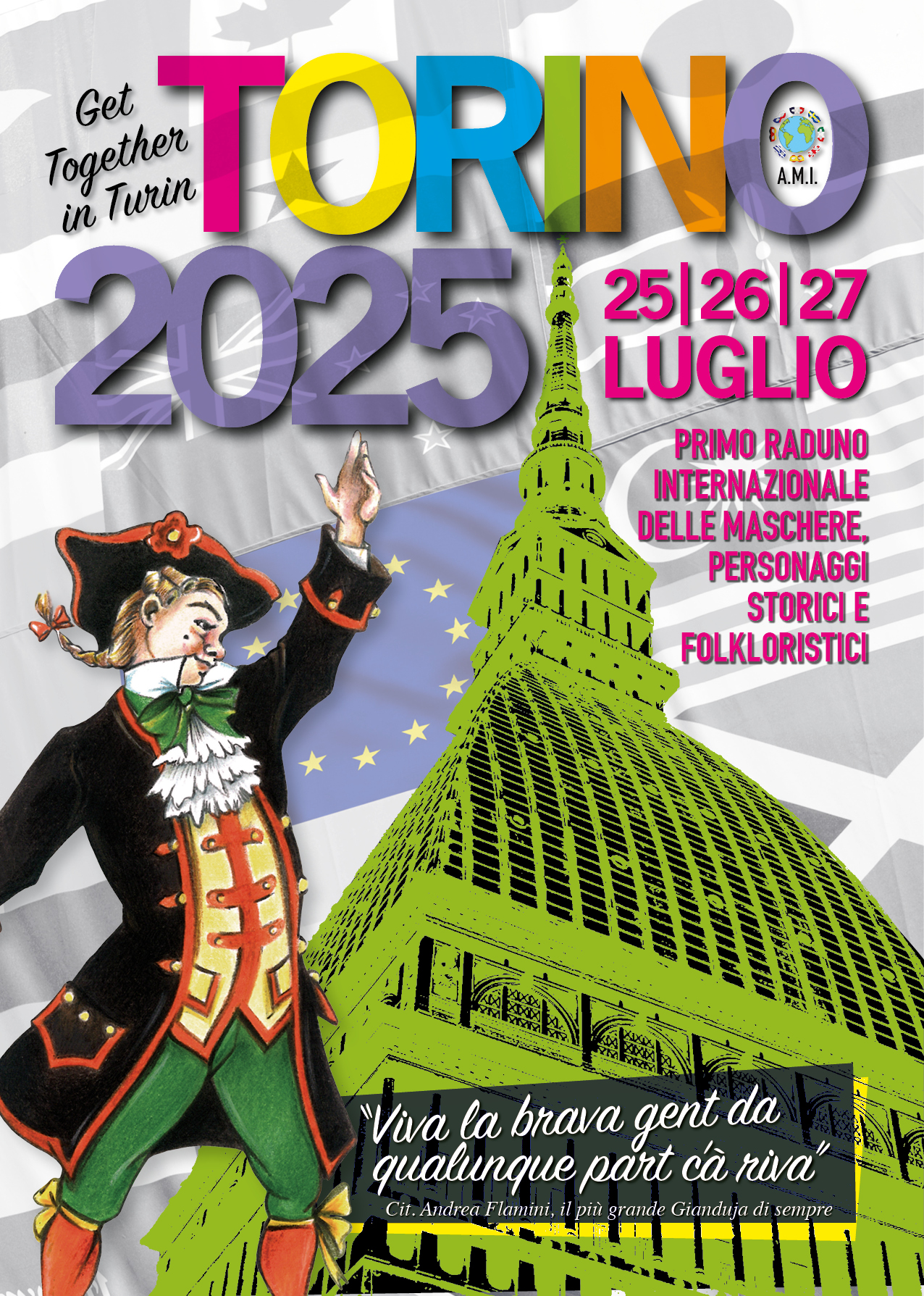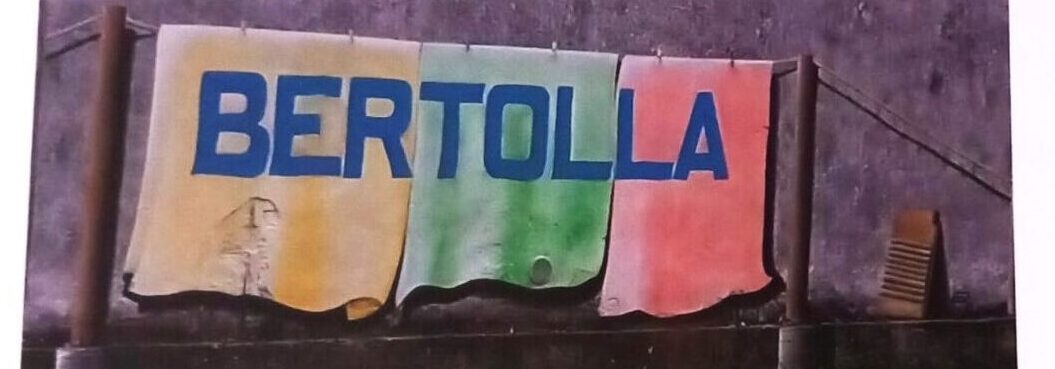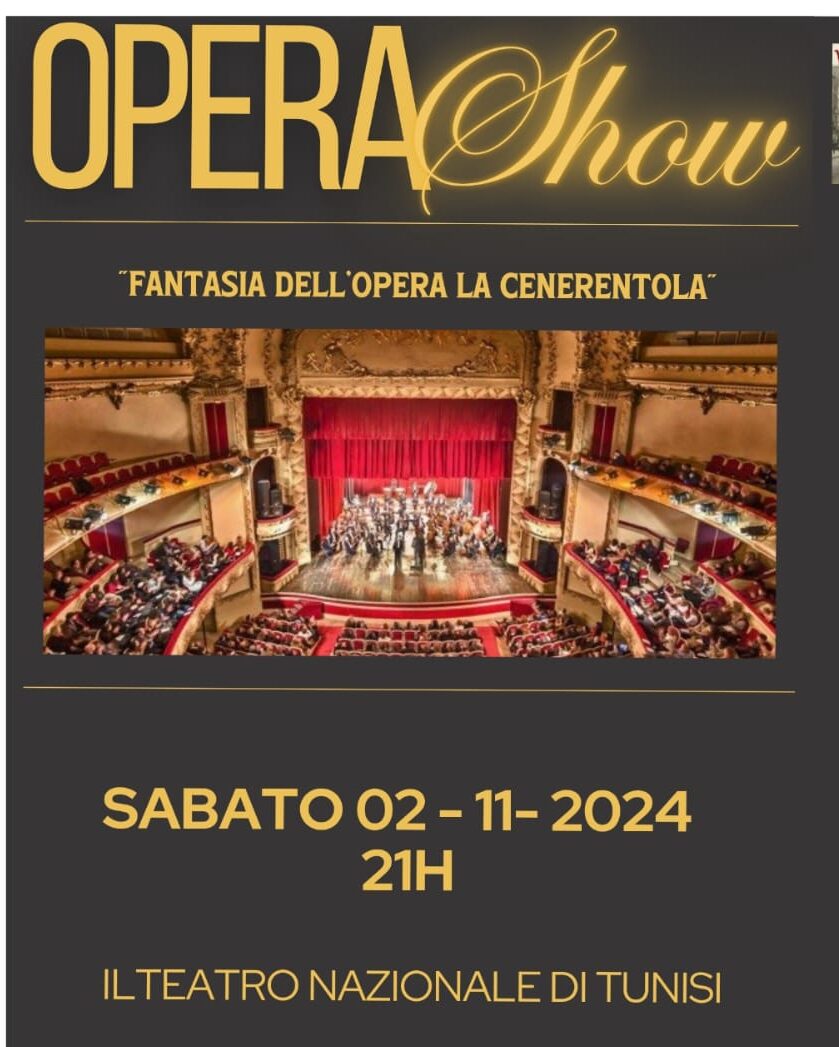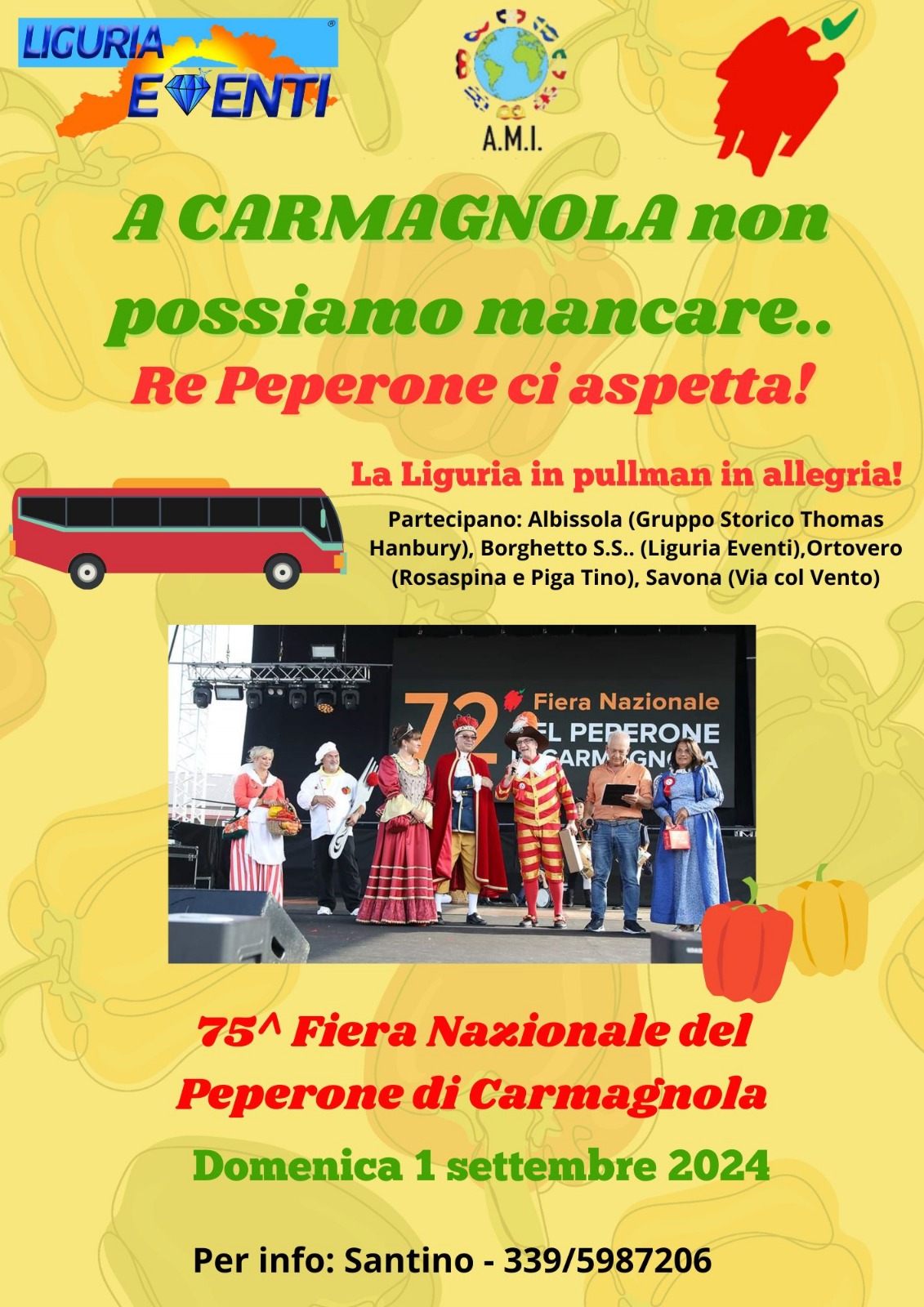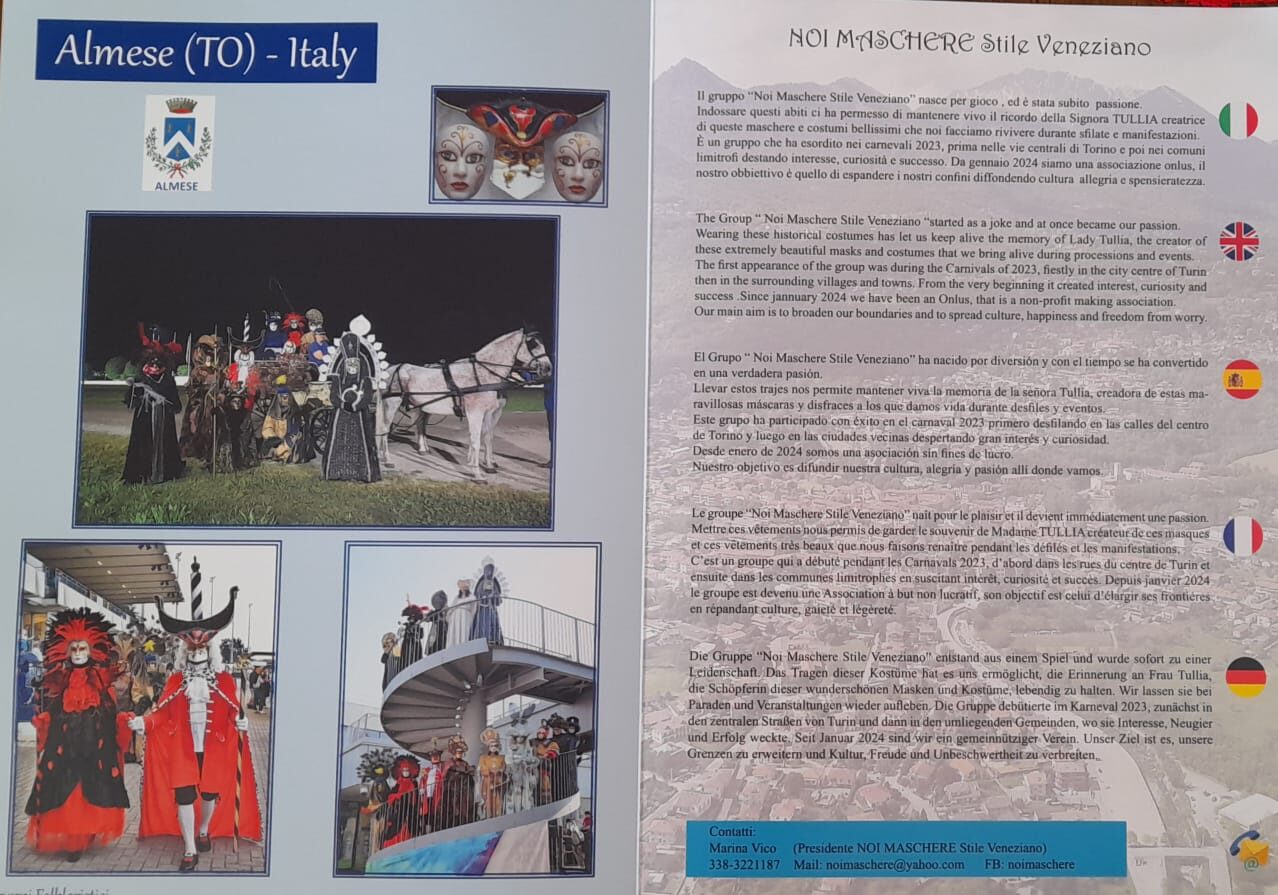VADO LIGURE
U BACICCIA E DAMA BRUNILDE DEL CASATO CELESIA
U Baciccia è una delle maschere principali del teatro Genovese di marionette, è uno dei simboli più iconici della città di Genova e rappresenta il tradizionale pescatore Ligure povero, allegro e mugugnone, con la sua maglia a righe rossa e bianca, i pantaloni blu, il berretto con il pon pon rosso, denominato la baciccia, e l’immancabile pipa da consumato uomo di mare.
Il suo nome è un diminutivo di Giovanni Battista, nome molto diffuso nel genovesato, che onora il Santo Patrono della città di Genova e di molte città della regione.
Il personaggio nasce alla fine del XIX secolo grazie all’attore teatrale e marionettista Raffaele Pallavicini, tuttavia il grande successo del Baciccia fu dovuto al burattinaio Mario Magonio che lo riportò in auge con una serie di spettacoli nel suo Teatro dei Burattini.
Dama Brunilde si ispira all’antichissimo Casato Ligure proveniente da Savona, da Chiavari e Rapallo, che venne ascritto in due linee al Patriziato Genovese negli alberghi Spinola e Spinelli e in una terza il 1759, tutte estinte ora.
Oggi di quell’antico Ceppo restano due famiglie: una trasferitasi in Sicilia e l’altra nella Riviera di Ponente.
Quest’ultima venne decorata da Re Carlo Alberto con la Baronia di Vegliasco il 21 dicembre 1833.
Nel Gruppo Consulta del Volontariato Vadese, organizzatori del Carnevale, si potrebbero incontrare altri personaggi tipici: U Marcheise, u Baccan e a Bacanna, a Signua, u Purtuole ecc.
Interprete della Dama Brunilde è la Sig.ra Bruna Taraddei e del Baciccia è il Sig. Fulvio Bolla.
In collaborazione con il club Teatro Celesia, compagnia teatrale dialettale di Vado Ligure.
U Baciccia is one of the main masks of the Genoese puppet theatre, it is one of the most iconic symbols of the city of Genoa and represents the traditional poor, cheerful and grumbling Ligurian fisherman, with his red and white striped shirt, blue trousers, cap with the red pom pom, called the baciccia, and the inevitable pipe of a consummate seafarer.
His name is a diminutive of Giovanni Battista, a very common name in the Genoese area, which honors the patron saint of the city of Genoa and many cities in the region.
The character was born at the end of the 19th century thanks to the theater actor and puppeteer Raffaele Pallavicini, however the great success of Baciccia was due to the puppeteer Mario Magonio who brought it back into vogue with a series of shows in his Puppet Theater.
Dama Brunilde is inspired by the ancient Ligurian Household coming from Savona, Chiavari and Rapallo, which was ascribed in two lines to the Genoese Patriciate in the Spinola and Spinelli hotels and in a third in 1759, all now extinct.
Today, two families remain of that ancient strain: one who moved to Sicily and the other to the Riviera di Ponente.
The latter was decorated by King Carlo Alberto with the Barony of Vegliasco on 21 December 1833.
In the Vadese Volunteer Council Group, organizers of the Carnival, you could meet other typical characters: U Marcheise, u Baccan and a Bacanna, a Signua, u Purtuole etc.
The interpreter of Lady Brunilde is Mrs. Bruna Taraddei and of Baciccia is Mr. Fulvio Bolla.
In collaboration with the Teatro Celesia club, a dialect theater company from Vado Ligure.
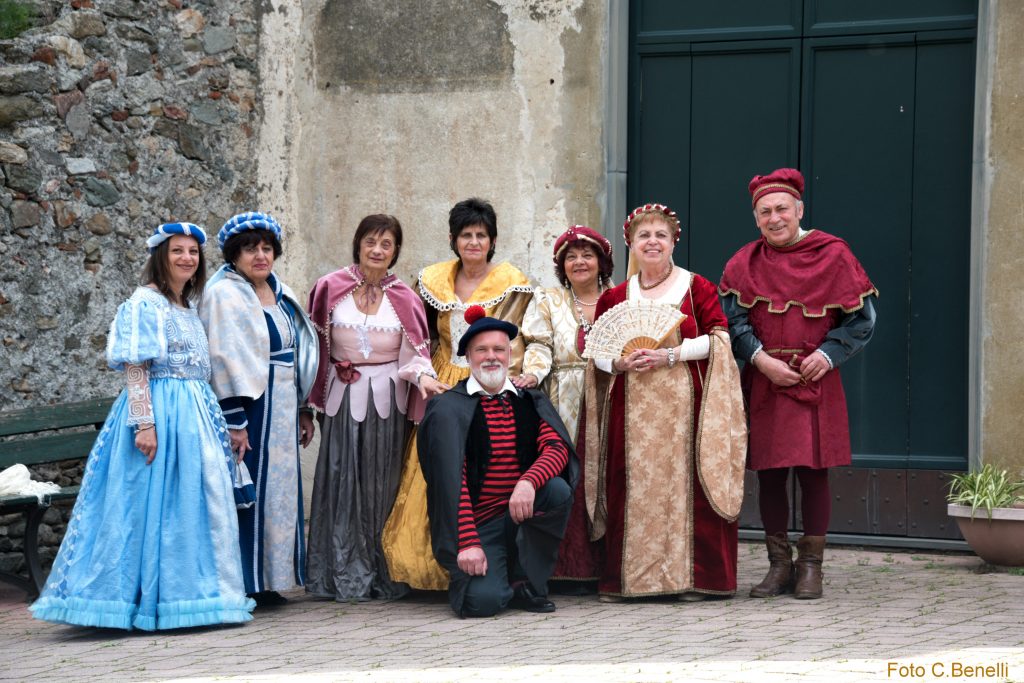
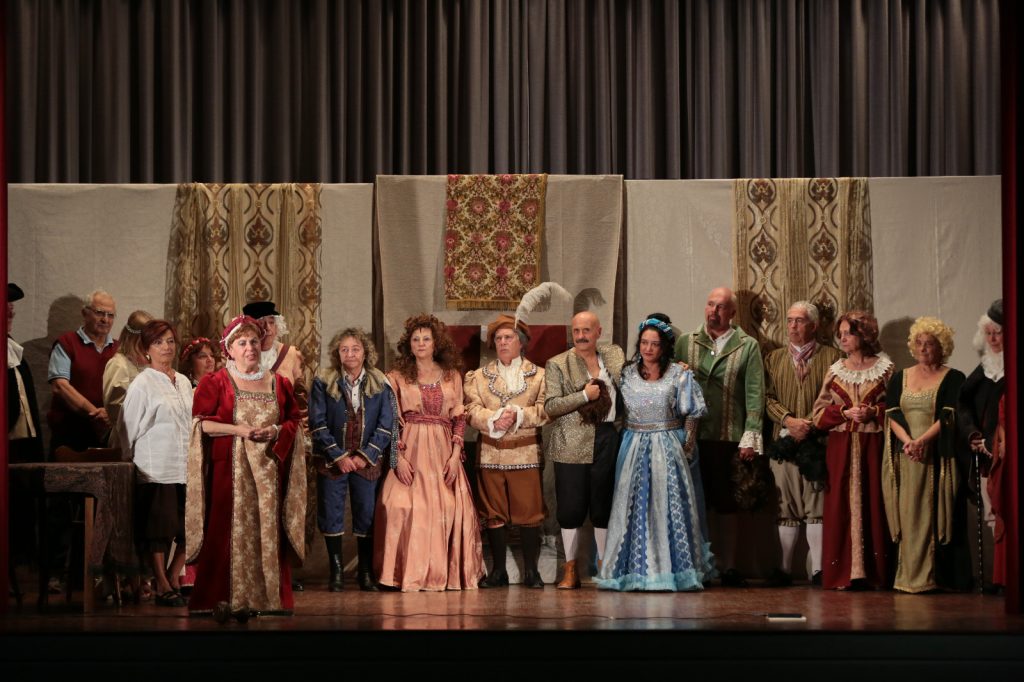
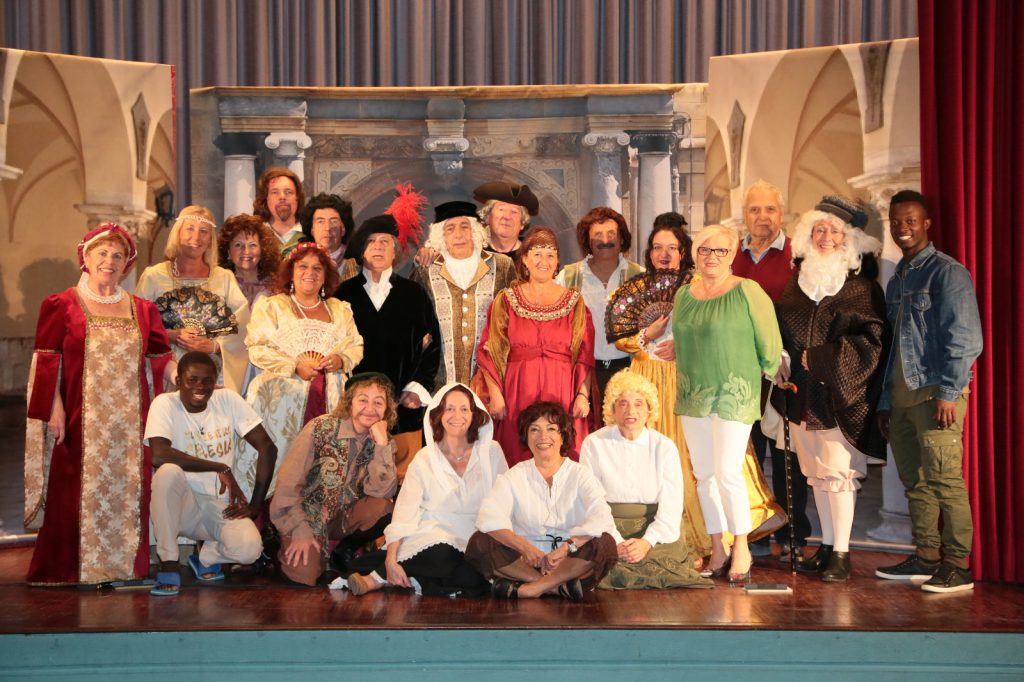
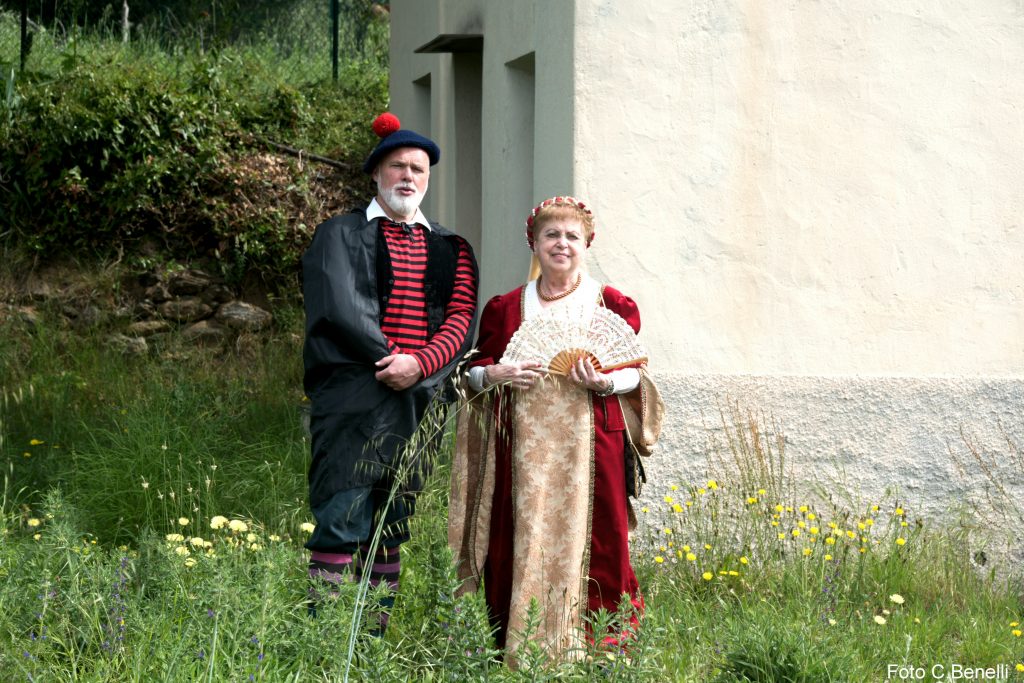
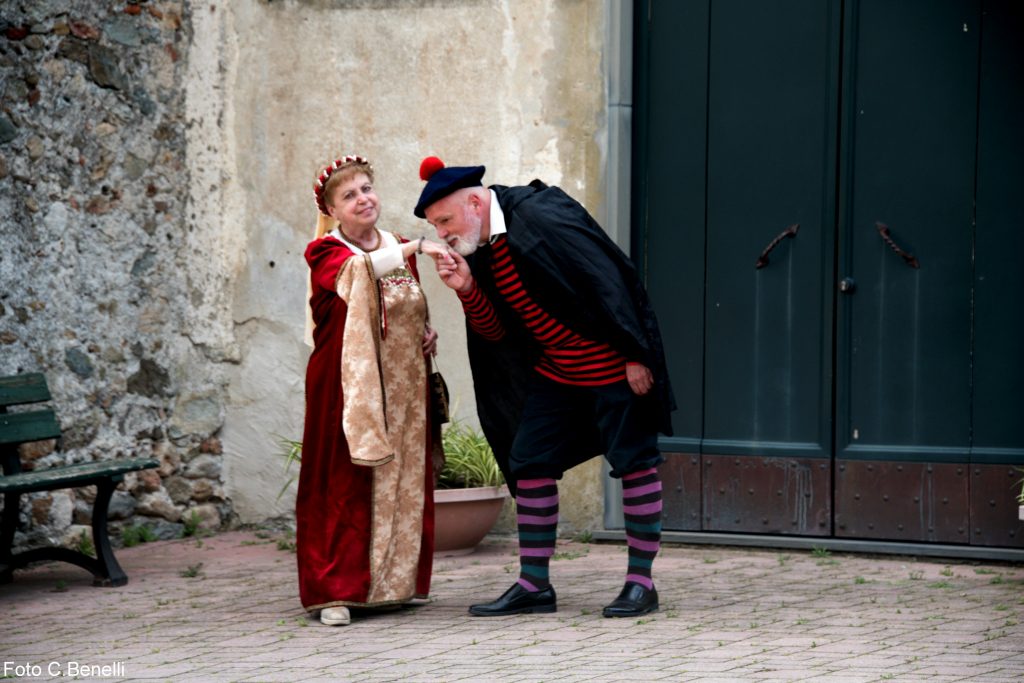
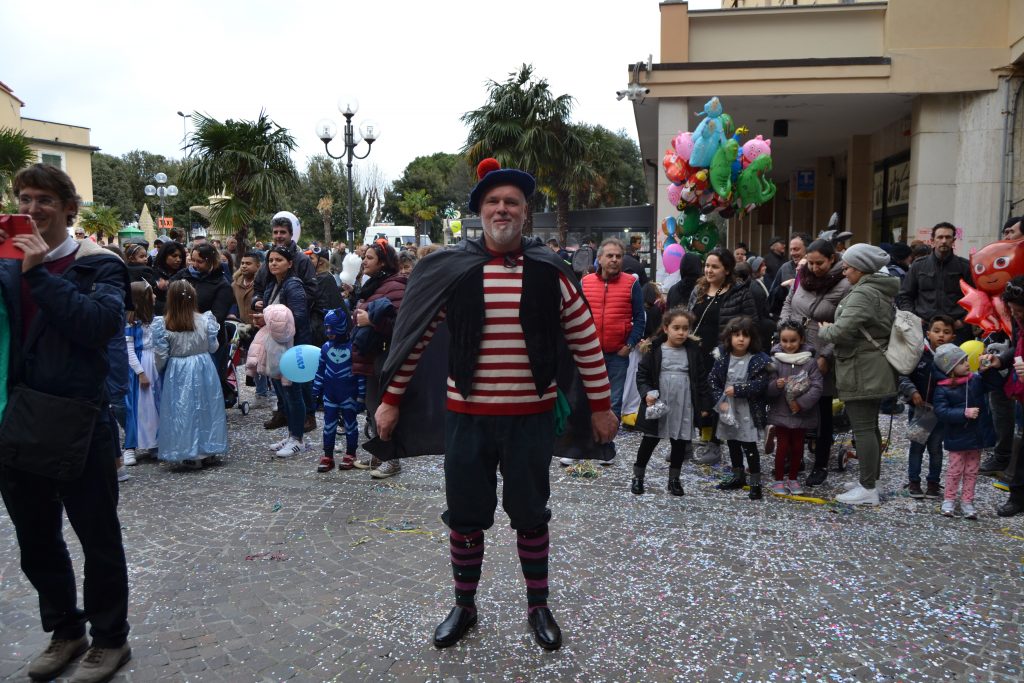
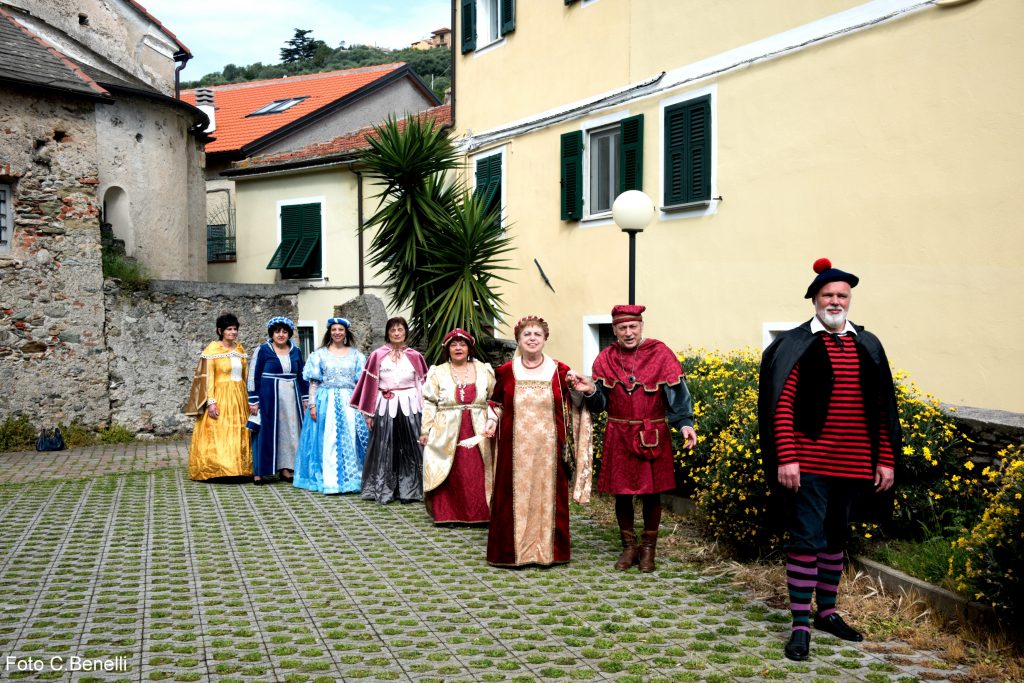
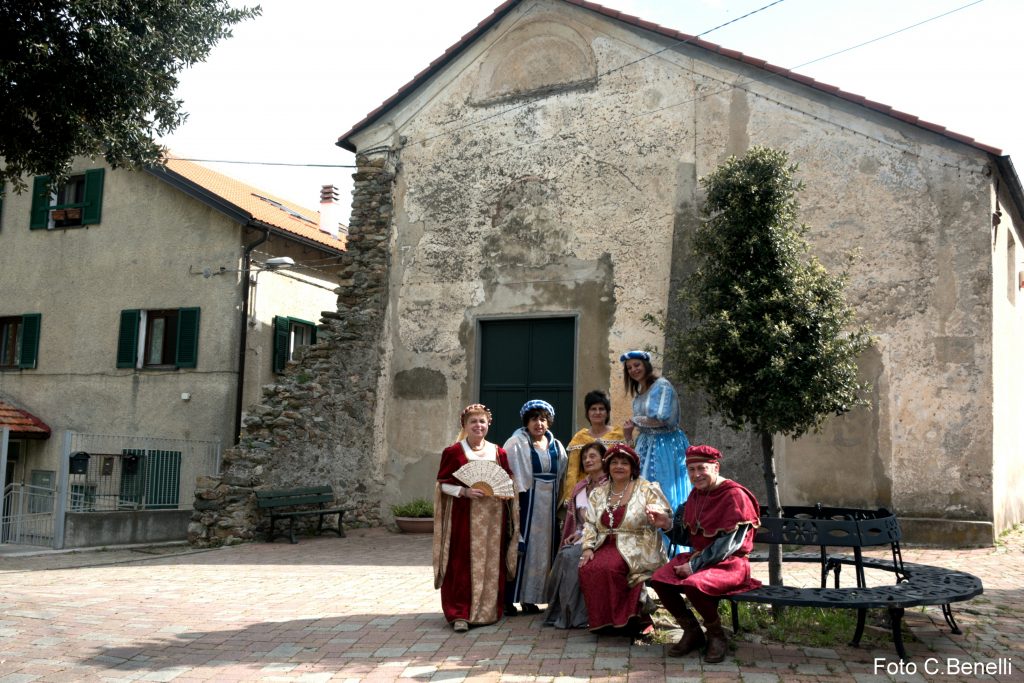
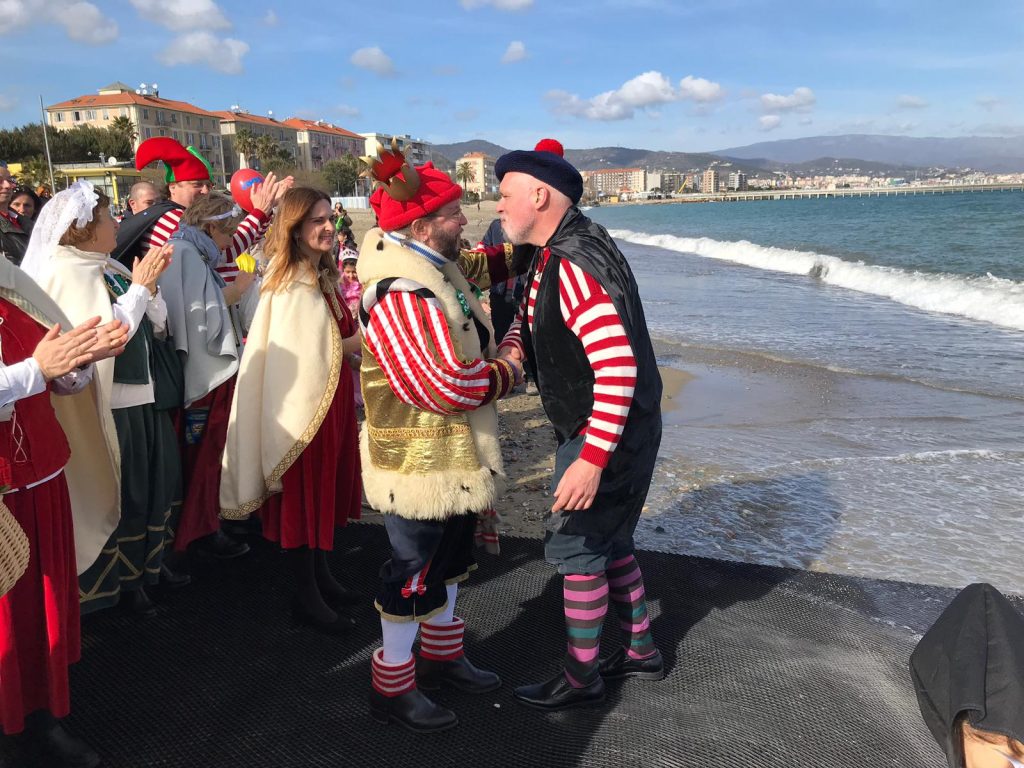
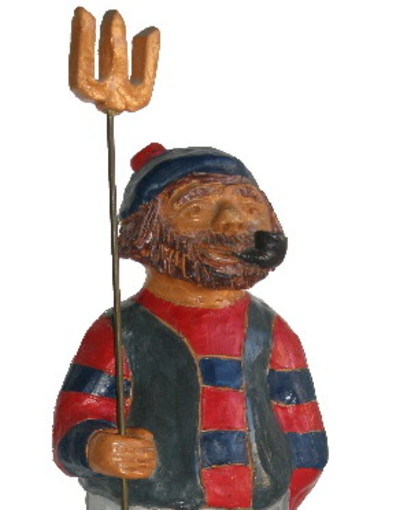
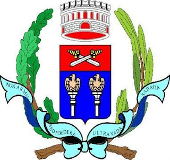
VALGIOIE
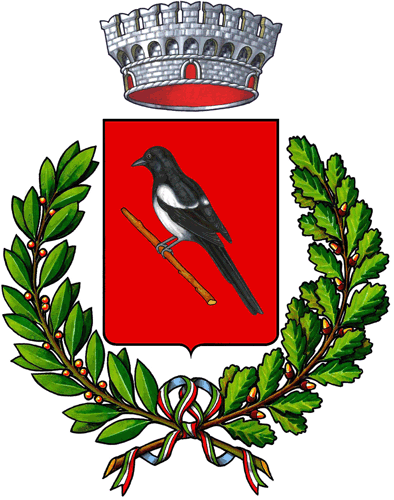
IL BUSCATÈ E LA BUSCATERA
Il Buscatè e la Buscatera, ovvero il Taglialegna e la Taglialegna, nascono ufficialmente nel 1995 su un’idea dell’allora Presidente della Pro-loco di Valgioie Steffan Aldo, tali figure rappresentano ciò che per decenni è stata fonte di reddito per il paese, ovvero il legname, tuttora ci sono ancora alcune aziende forestali sul territorio che portano avanti quest’attività. I personaggi, il Buscatè, interpretato da Gabriele Curri e la Buscatera, interpretata da Lucia Maritano, attraverso l’associazione “Buscatè & Buscatera Dü Gin”, si adoperano per far conoscere gli usi ed i costumi di un piccolo Comune come Valgioie, situato sulle montagne Piemontesi.
The Buscatè and the Buscatera, or the Taglialegna and the Woodcutter, were officially born in 1995 on an idea of the then President of the Pro-loco of Valgioie Steffan Aldo, these figures represent what for decades has been a source of income for the town, i.e. timber, there are still some forestry companies in the area that carry out this activity. The characters, Buscatè, played by Gabriele Curri and Buscatera, played by Lucia Maritano, through the association “Buscatè & Buscatera Dü Gin”, work to raise awareness of the habits and customs of a small municipality like Valgioie, located on the Piedmont mountains.
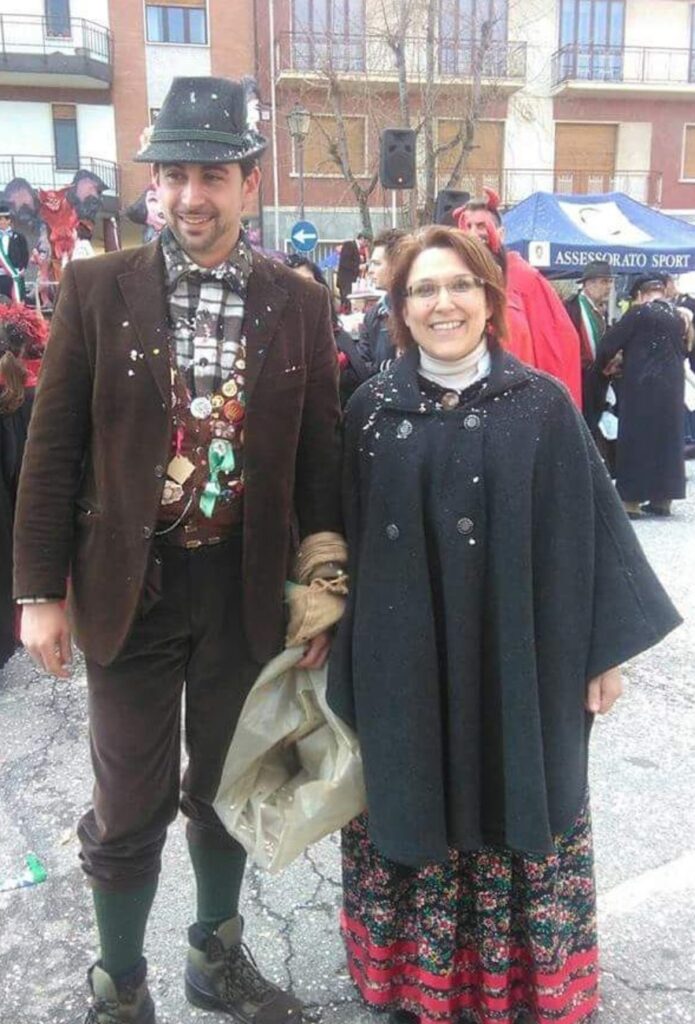
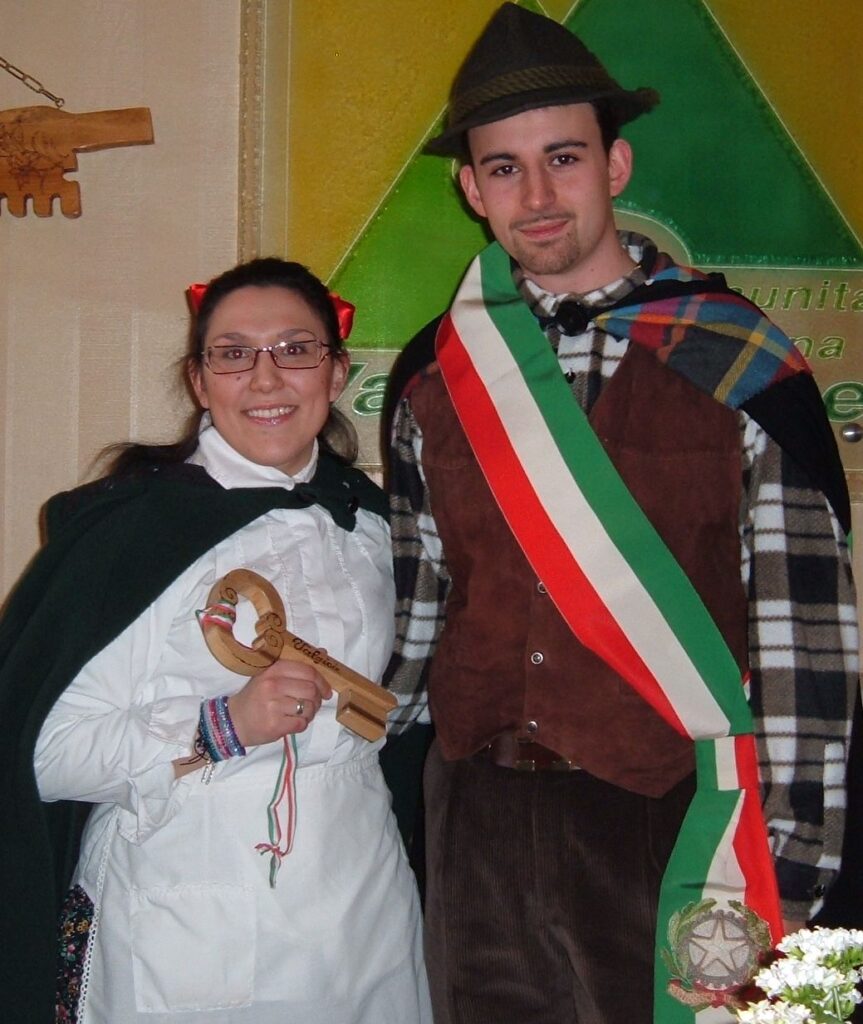
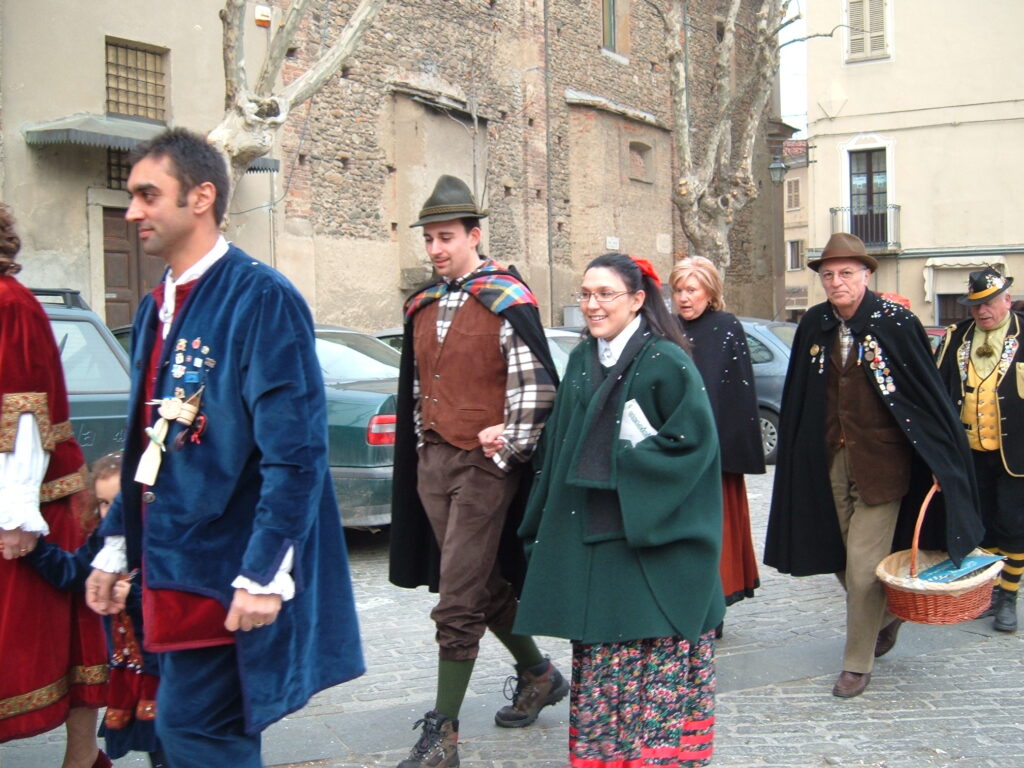
VARALLO
MARCANTONIO E LA CECCA
Marcantonio Carlavèe è una maschera ottocentesca, attualmente interpretata da una persona vera, prima del 1905 probabilmente era un fantoccio. È la figura preminente del carnevale varallese ed è una maschera nazionale. La Cecca(diminutivo di Francesca) è la consorte di re Marcantonio. Fino al 1947 era interpretata da un uomo ma, a partire dall’anno successivo, il ruolo è stato ricoperto da interpreti femminili. L’identità della maschera cambia ogni anno e rimane segreta al pubblico fino all’evento a lei dedicato.
Marcantonio Carlavèe is a nineteenth-century mask, currently played by a real person, before 1905 he was probably a puppet. He is the pre-eminent figure of the Varallo carnival and is a national mask. The Cecca(diminutive of Francesca) is the consort of King Marcantonio. Until 1947 she was played by a man but, starting from the following year, the role was covered by female interpreters. The identity of the mask changes every year and remains secret to the public until the event dedicated to it.
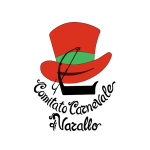
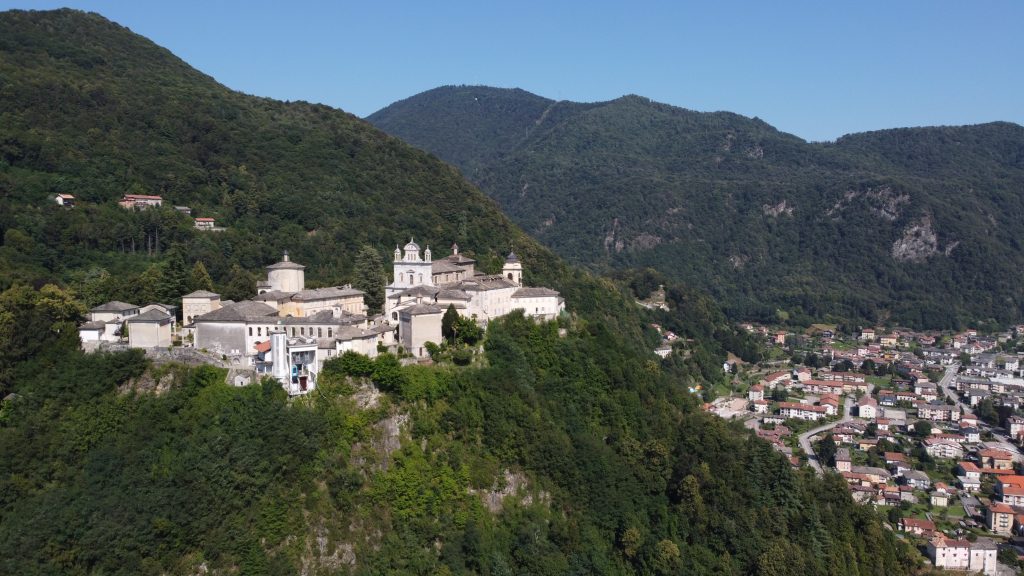
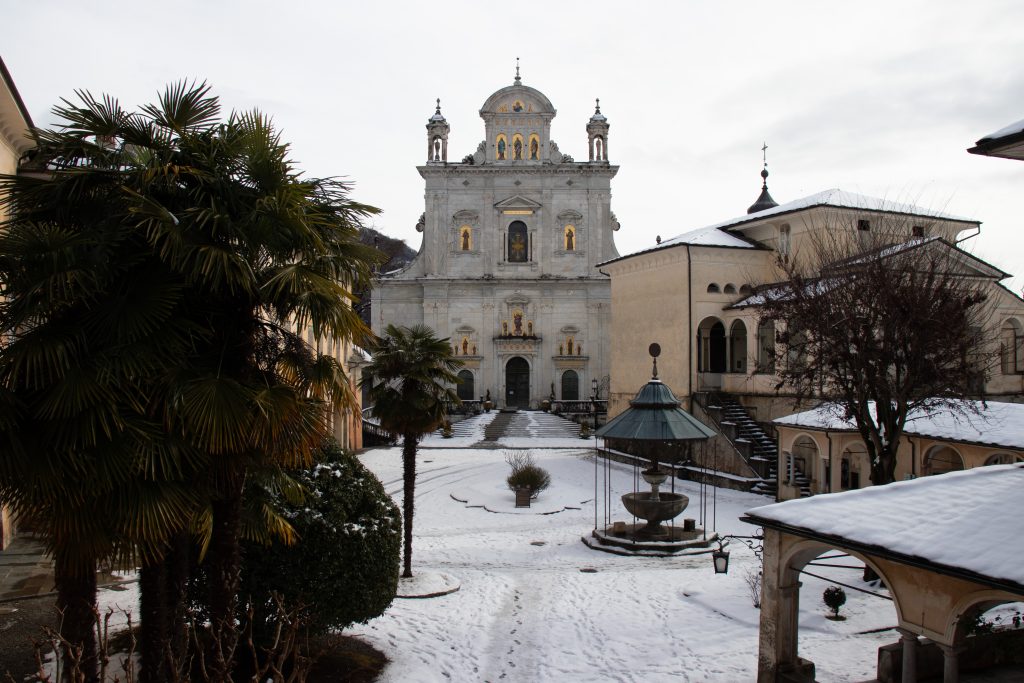
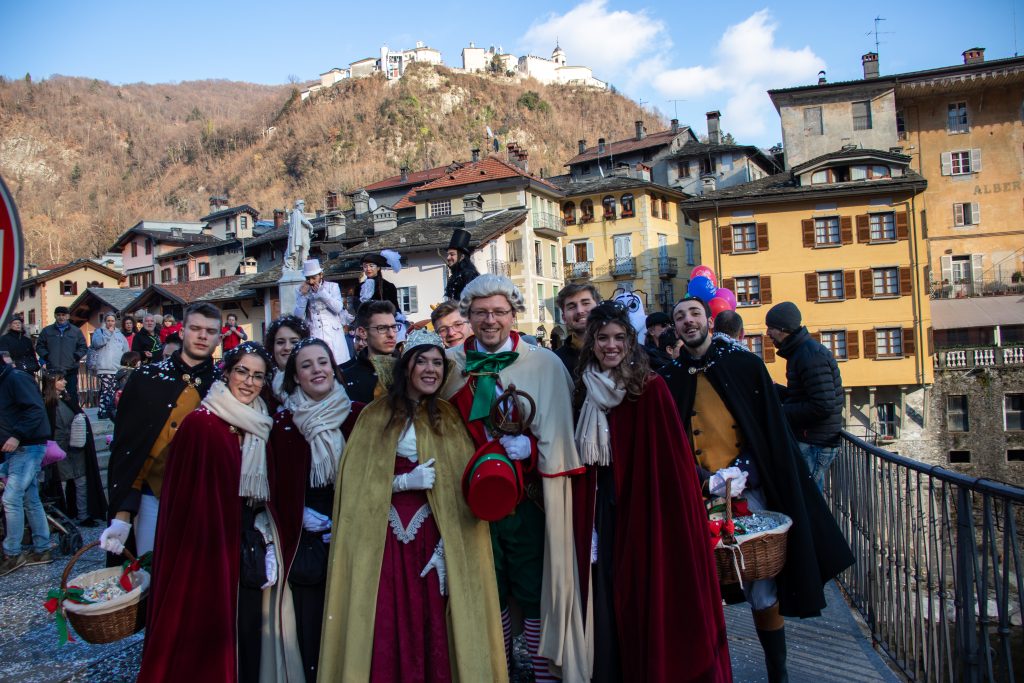
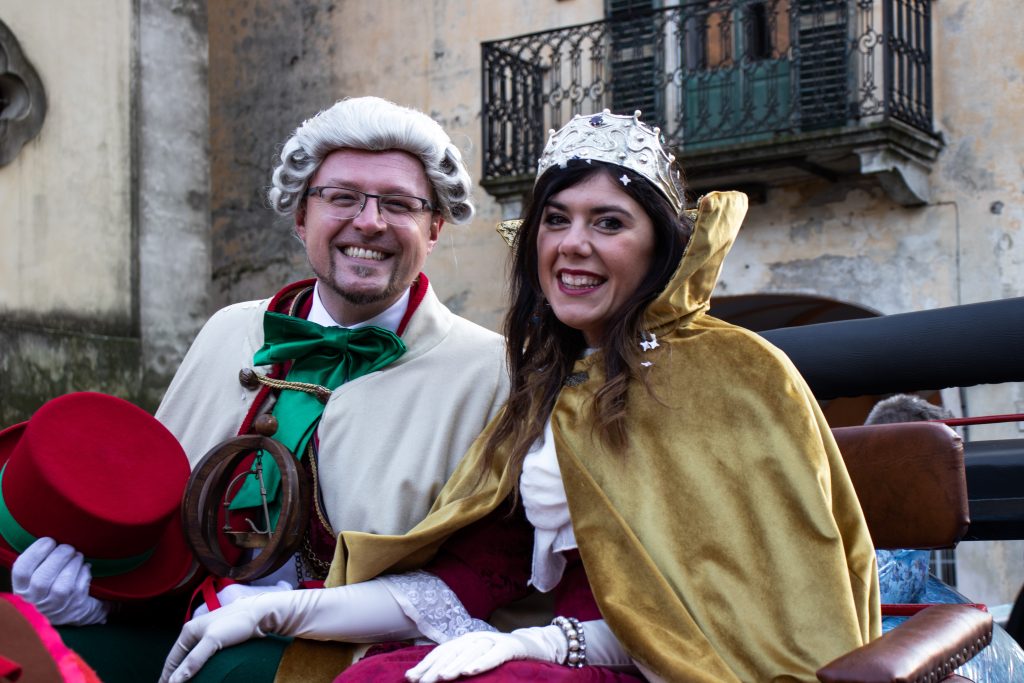
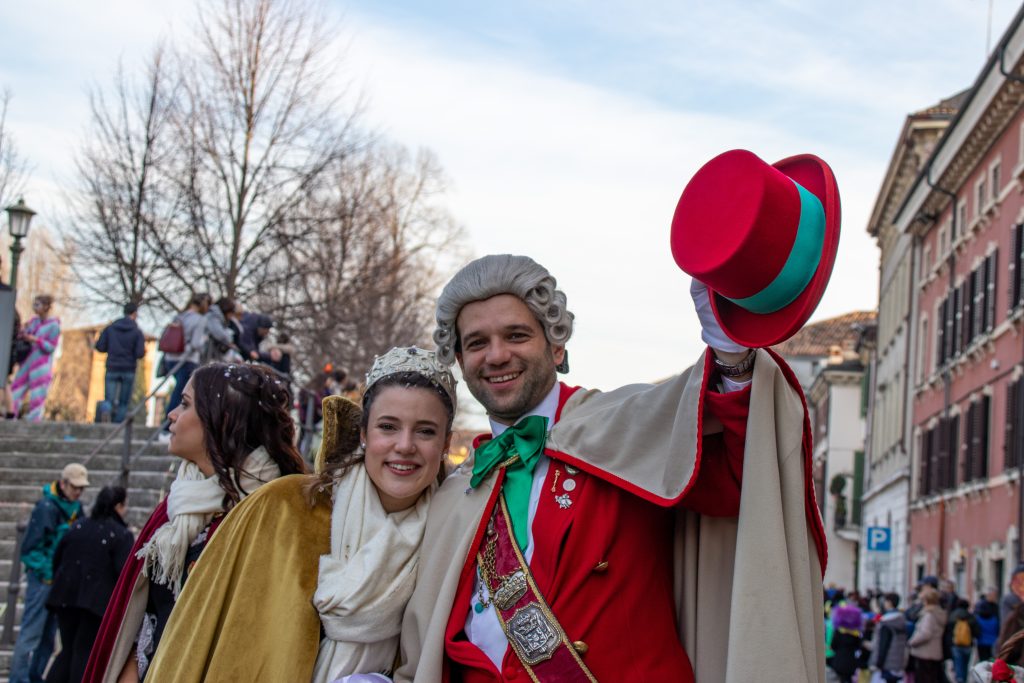
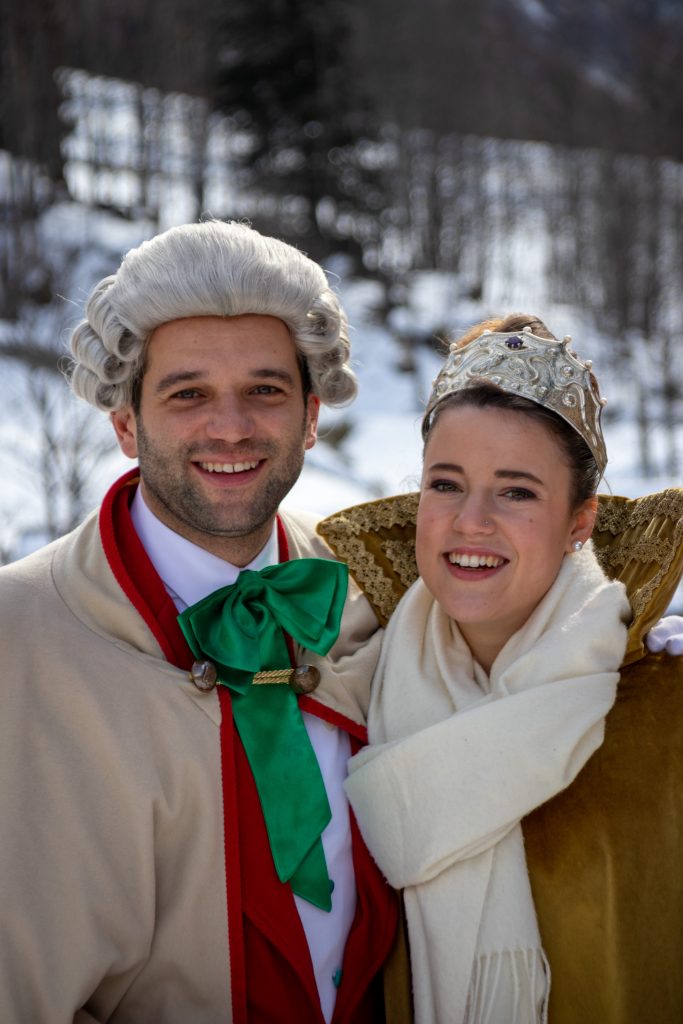
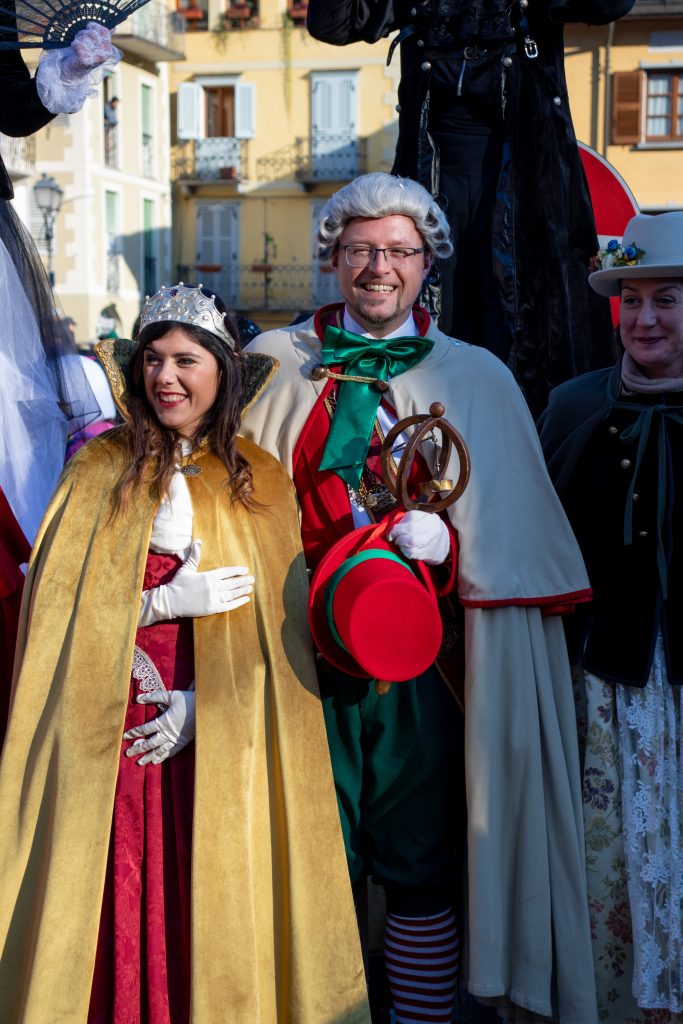
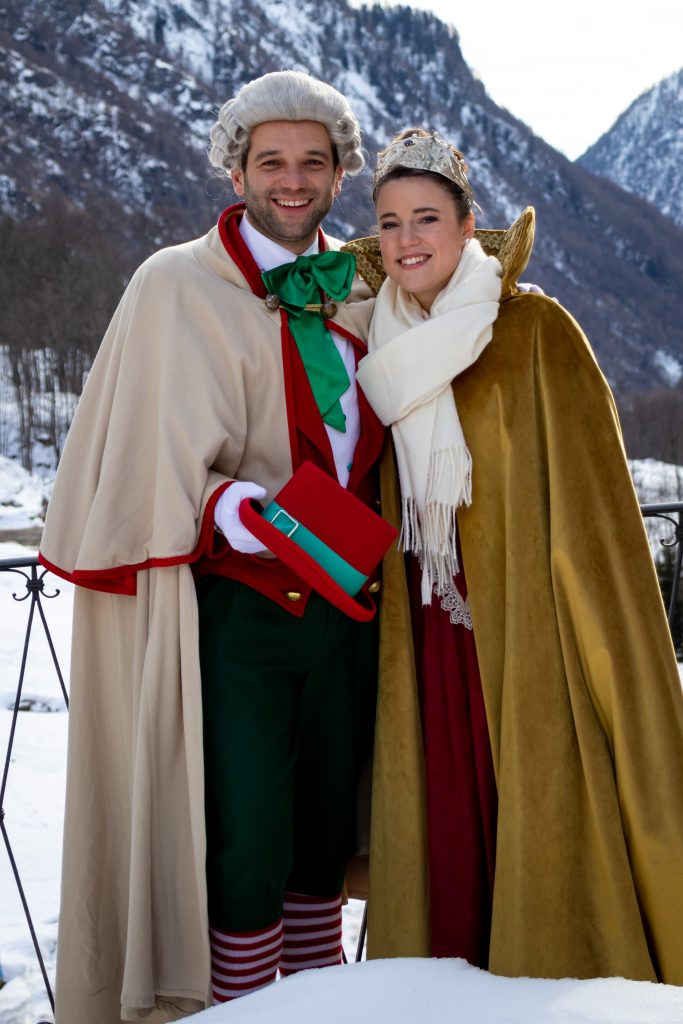
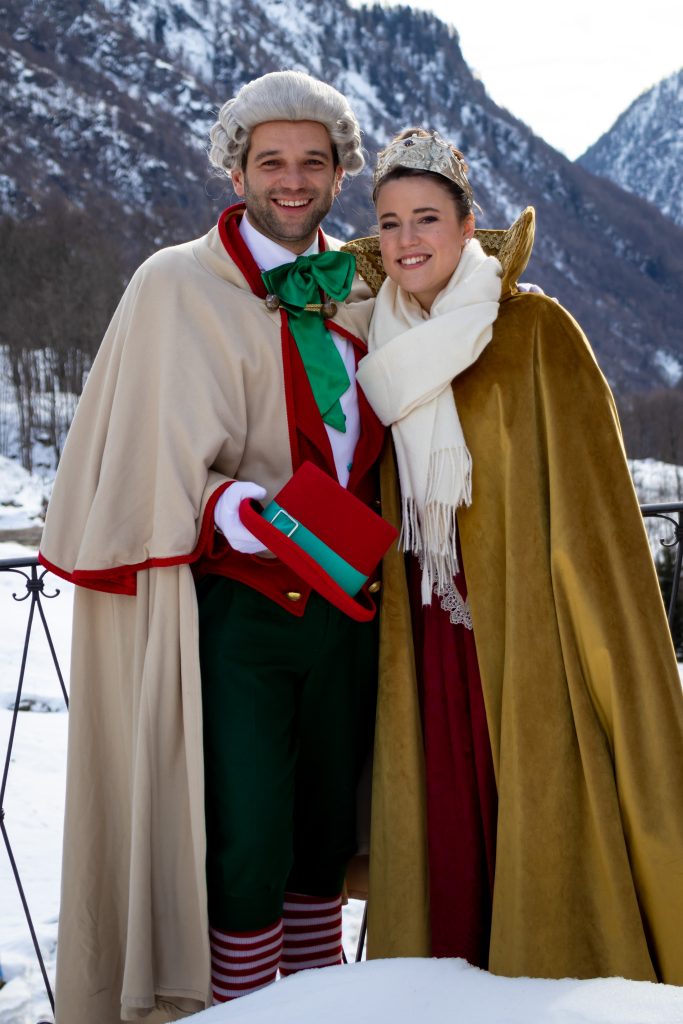
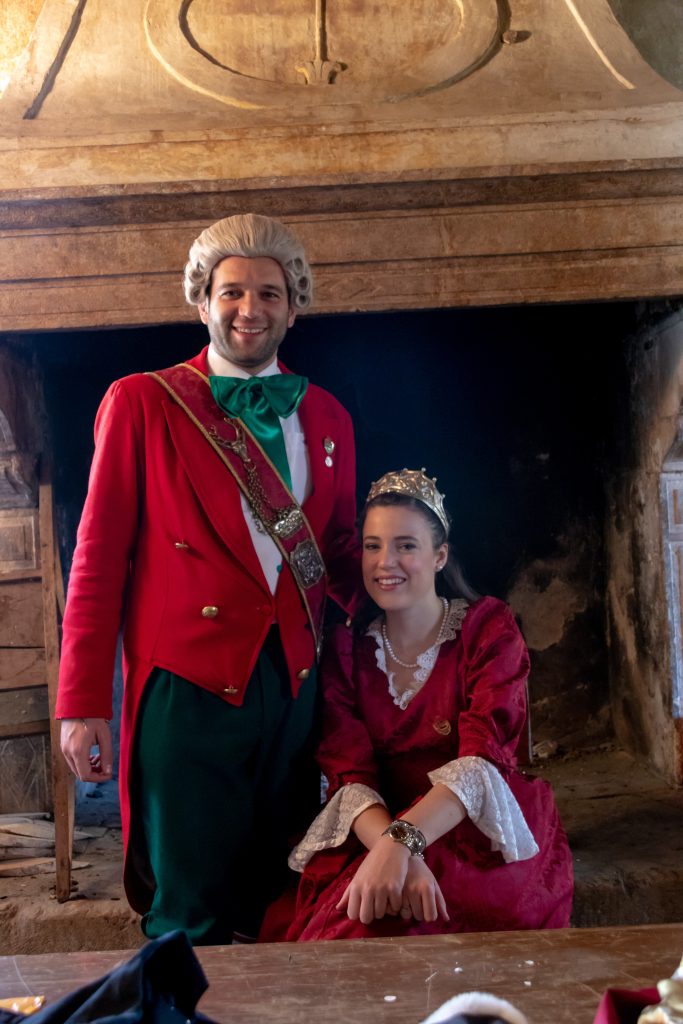
VARAZZE
MUMININ A PESCEA, MENEGHIN U TREGGIA E U SCAVENNA
I personaggi del Carnevale di Varazze sono “Muminin a Pescea, Meneghin u Treggia e u Scavenna,” ideati dal Gruppo Animazione Varazze.
Questi personaggi rispecchiano fedelmente la gente di mare tipica ligure e ne valorizzano i costumi e le usanze dei pescatori.
La venditrice di pesce indossa una scamiciata (abito senza maniche) blu, sotto una camicia bianca con maniche a tre quarti per evitare di sfregare i polsini sul pesce e sul capo porta un bellissimo “mezzaro” raffigurante l’albero della vita.
La parola “mezzaro” (mandillo in genovese, fazzoletto) nasce dall’arabo, da un termine antico che vuol dire “coprire.”
I mezzari sono grandi teli di cotone stampato, con un campo centrale decorato con l’albero della vita incorniciato da un bordo.
I più bei cotoni stampati erano prodotti in India e poi inviati via mare al porto di Genova.
Solo alla fine del Cinquecento anche in Liguria nacquero numerosi laboratori tessili che producevano questi grandi teli tipici di cotone stampato che testimoniano la ricchissima storia artigianale della regione, infatti, la nostra terra ha avuto per secoli la tessitura al centro del proprio patrimonio culturale ed economico.
La tecnica della stampa su cotone nel tardo Seicento rendeva questi tessuti dei veri e propri simboli dell’aristocrazia europea, facendo concorrenza alle stoffe più preziose, riprodotta anche in Italia, abbassando i costi di produzione ed ampliando conseguentemente il mercato.
I mezzari e le tele di cotone in genere hanno avuto per secoli un forte legame economico e culturale con la Liguria: nell’Ottocento erano, infatti, un’importante risorsa per Genova e dintorni, dove erano in funzione molte filande e stamperie e dove operavano gli “indianatori,” soprannominati così per evocare l’origine dei colori stampati.
Così i cotoni stampati per i grandi teli dei mezzari, per i più piccoli “pezzotti” estivi, per la confezione di abiti e “mandilli,” accessori del costume tipico, diventarono elementi di abbigliamento e arredo diffusi e tradizionali nelle doti matrimoniali.
Raffigurati sui mezzari antichi possiamo trovare grandi bouquets centrali in stile occidentale, motivi a piccoli fiori orientaleggianti, navi, minareti, scimmie e molti altri motivi più o meno complessi, sviluppati nei secoli dalle manifatture Liguri.
Sicuramente il disegno più famoso è quello dell’albero della vita.
Muminin a Pescea è interpretata da Lina Pastorino.
Il Pescatore (Meneghin U Treggia) indossa pantaloni blu al ginocchio, camicia bianca senza bottoni, ma chiusa da lacci (i bottoni erano pericolosissimi per un pescatore perchè se malauguratamente si fossero impigliati nella rete mentre veniva calata sarebbe finito in mare), in vita ha una fascia rossa, in testa un berretto blu con bordo rosso che richiama la fascia e a tracolla una rete da sciabica (pesca che si fa tirando la rete da riva- oggi proibita).
Il Pescatore è interpretato da Mauro Pastorino.
Il terzo personaggio è un maestro d’ascia soprannominato “Scavenna” che in genovese indica una piccola scaglia di legno che, mentre lo si sta lavorando, si conficca in una mano o altrove.
U Scavenna è interpretato da Nello Cabassa.
Fanno parte del Gruppo del Gav di Varazze anche: Margherita Alipede, Giovanna Montaruli, Nicoletta Damonte, Maria Zunino, Marcella Lanza, Giannina Rebora, Luciana Rebora, Teresa Delfino, Maddalena Glori, Monica Accinelli, Gianna Delfino, Annateresa Del Monte, Paolo Guido, Gianpiero Franzone, Bruno Canepa, Gaspare Gabriele, Alessandro Arecco.
The characters of the Varazze Carnival are “Muminin a Pescea, Meneghin u Treggia and u Scavenna,” created by the Varazze Animation Group.
These characters faithfully reflect the typical Ligurian seafarers and enhance the customs and customs of the fishermen.
The fish seller wears a blue pinafore (sleeveless dress), underneath a white shirt with three-quarter sleeves to avoid rubbing the cuffs on the fish and on her head she wears a beautiful “mezzaro” depicting the tree of life.
The word “mezzaro” (mandillo in Genoese, handkerchief) comes from Arabic, from an ancient term that means “to cover.”
The mezzanines are large printed cotton sheets, with a central field decorated with the tree of life framed by a border.
The finest printed cottons were produced in India and then sent by sea to the port of Genoa.
Only at the end of the sixteenth century numerous textile workshops were created in Liguria that produced these large typical printed cotton sheets which testify to the rich artisan history of the region. In fact, our land has had weaving at the center of its cultural and economic heritage for centuries. The technique of printing on cotton in the late seventeenth century made these fabrics true symbols of the European aristocracy, competing with the most precious fabrics, also reproduced in Italy, lowering production costs and consequently expanding the market.
The mezzari and cotton cloths in general have had a strong economic and cultural link with Liguria for centuries: in the nineteenth century they were, in fact, an important resource for Genoa and its surroundings, where many spinning mills and printing presses operated and the “indianators,” nicknamed thus to evoke the origin of printed colours.
Thus the printed cottons for the large mezzari cloths, for the smaller summer “pezzotti”, for the making of dresses and “mandillos”, accessories of the typical costume, became widespread and traditional elements of clothing and furnishings in marriage dowries.
Depicted on ancient mezzanines we can find large central bouquets in Western style, small oriental flower motifs, ships, minarets, monkeys and many other more or less complex motifs, developed over the centuries by Ligurian manufacturers.
Certainly the most famous design is that of the tree of life.
Muminin in Pescea is played by Lina Pastorino.
The Fisherman (Meneghin U Treggia) wears blue knee-length trousers, a white shirt without buttons, but closed with laces (the buttons were very dangerous for a fisherman because if unfortunately they had got caught in the net while it was being lowered he would have ended up in the sea), in life he a red sash, on his head a blue cap with a red edge that recalls the sash and a seine net over his shoulder (fishing which is done by pulling the net from the shore – today prohibited).
The Fisherman is played by Mauro Pastorino.
The third character is a shipwright nicknamed “Scavenna” which in Genoese indicates a small flake of wood which, while you are working it, sticks in your hand or elsewhere.
U Scavenna is played by Nello Cabassa.
Also part of the Gav di Varazze group are: Margherita Alipede, Giovanna Montaruli, Nicoletta Damonte, Maria Zunino, Marcella Lanza, Giannina Rebora, Luciana Rebora, Teresa Delfino, Maddalena Glori, Monica Accinelli, Gianna Delfino, Annateresa Del Monte, Paolo Guido, Gianpiero Franzone, Bruno Canepa, Gaspare Gabriele, Alessandro Arecco
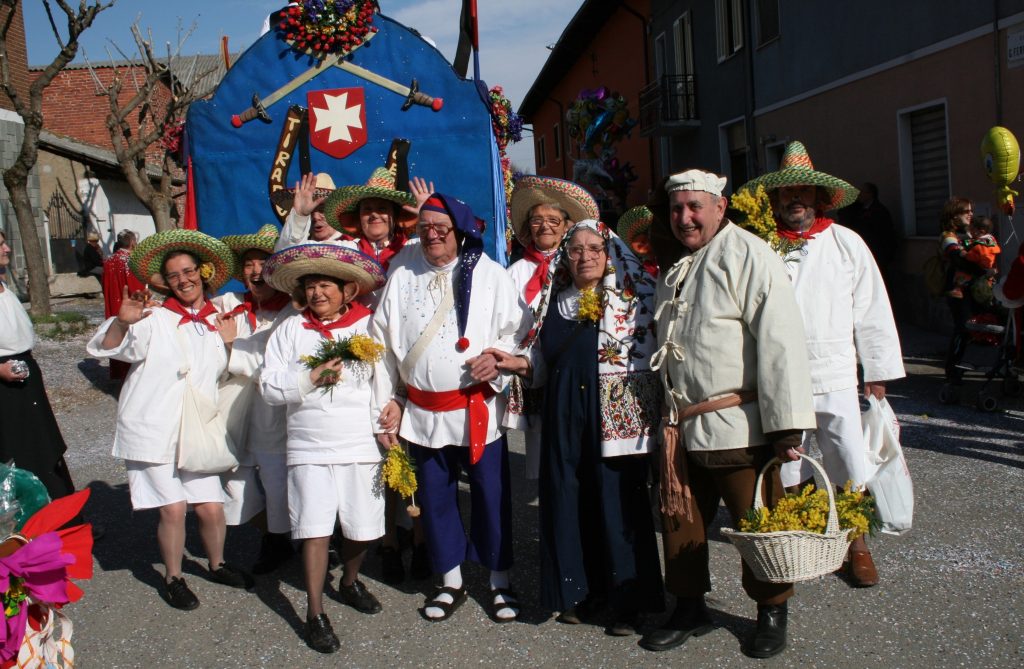
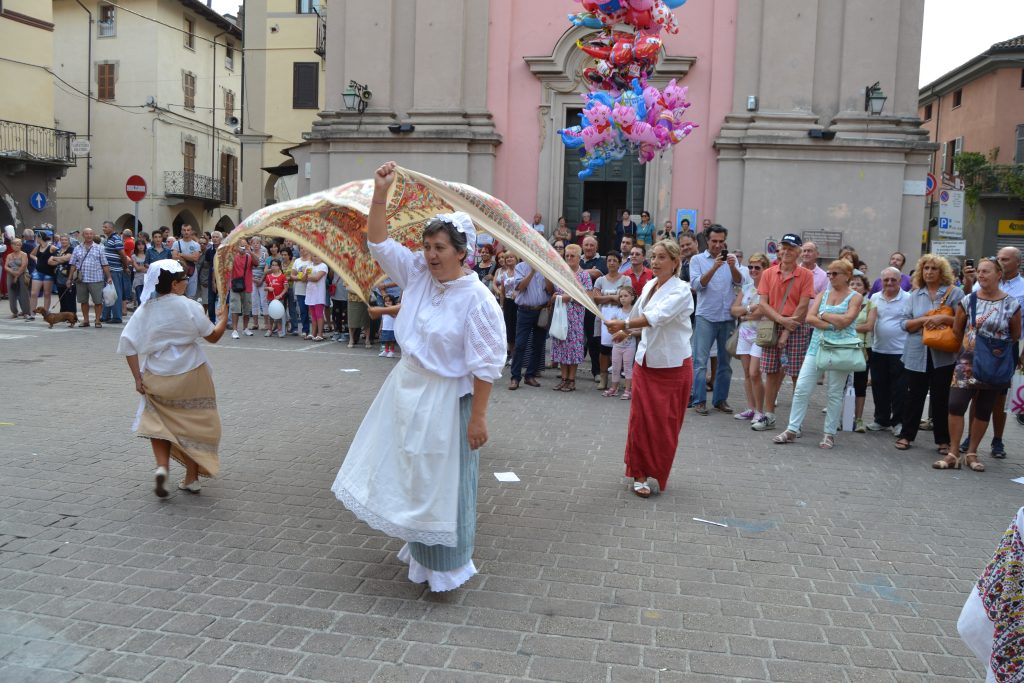
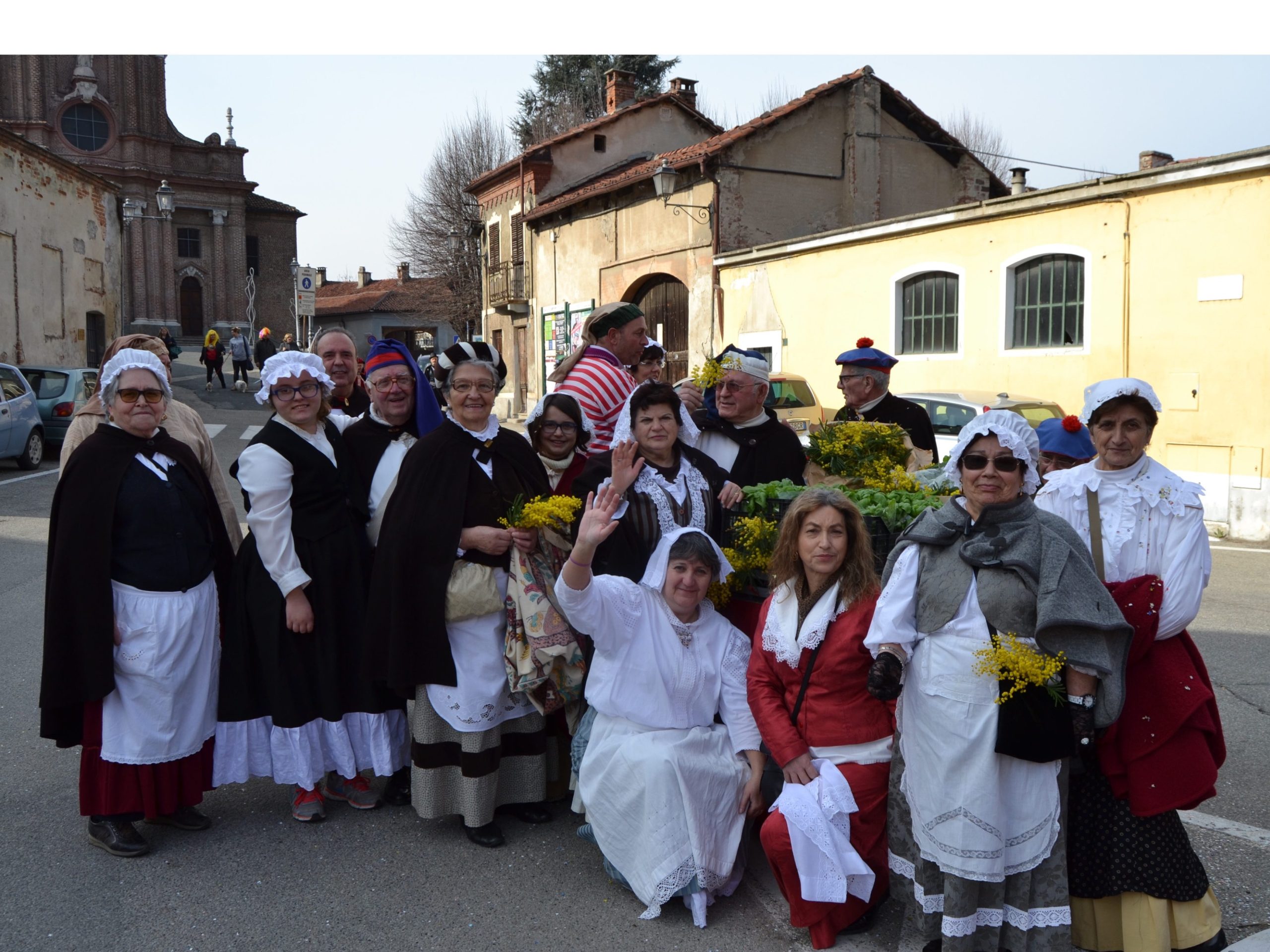
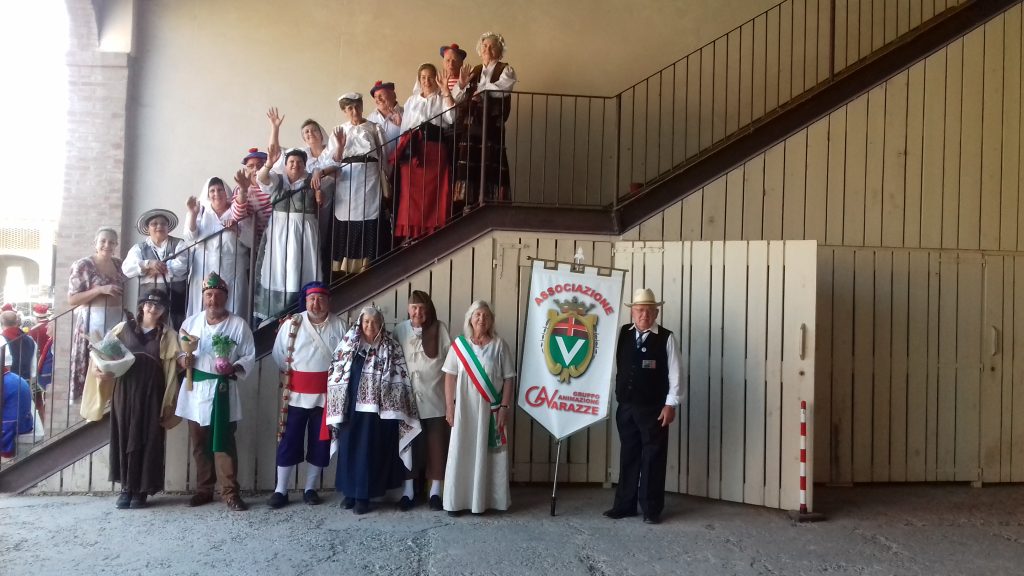
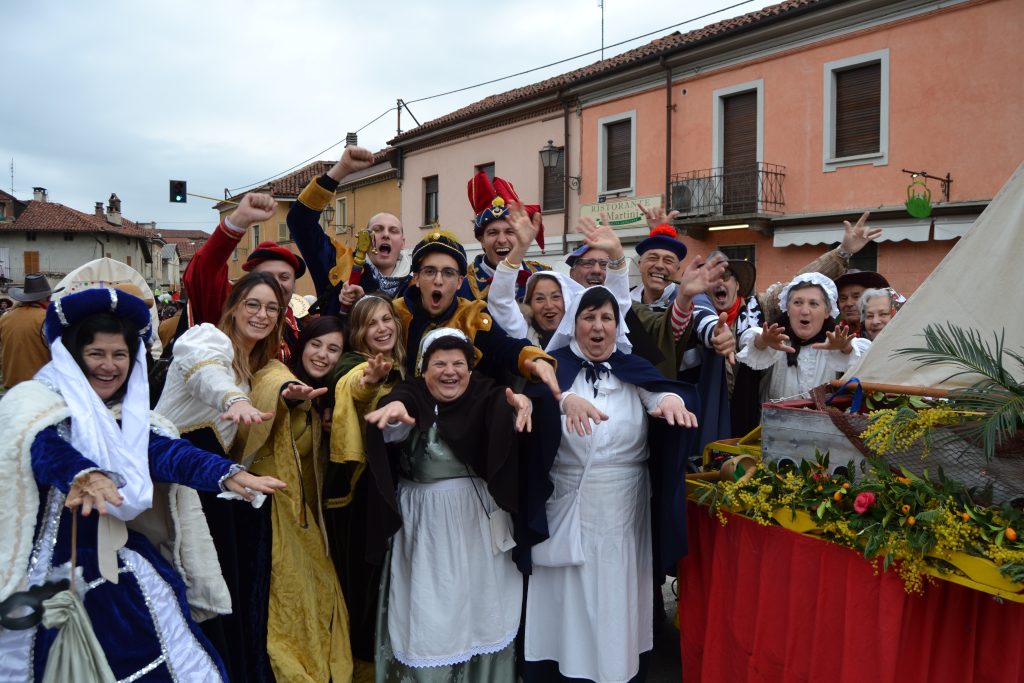
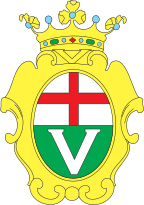
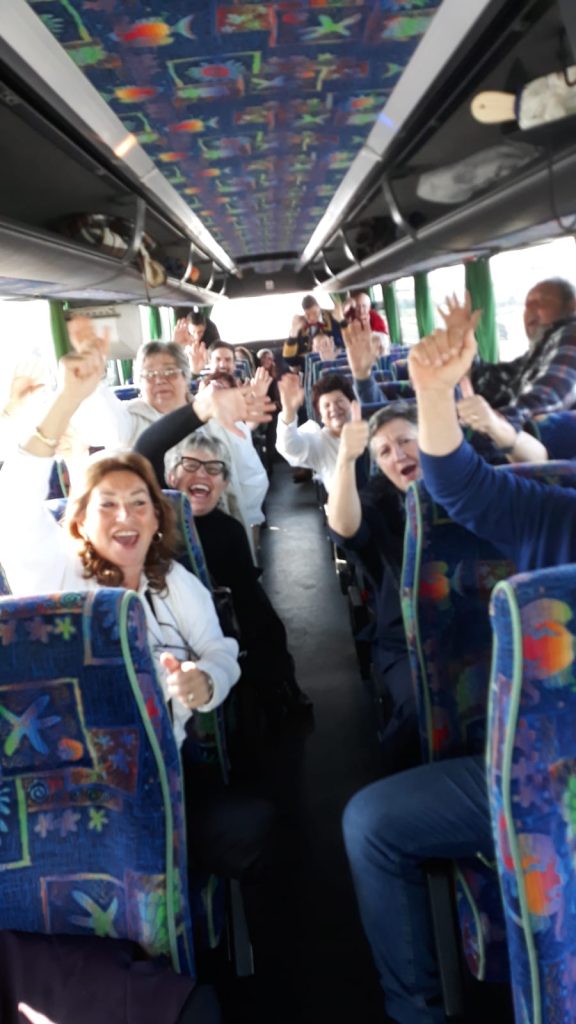
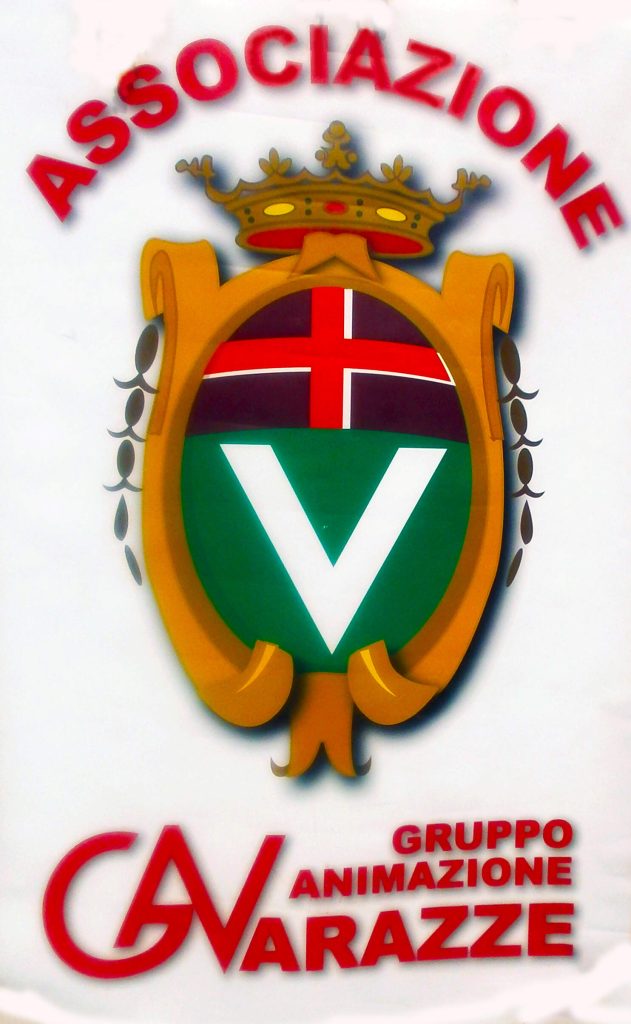
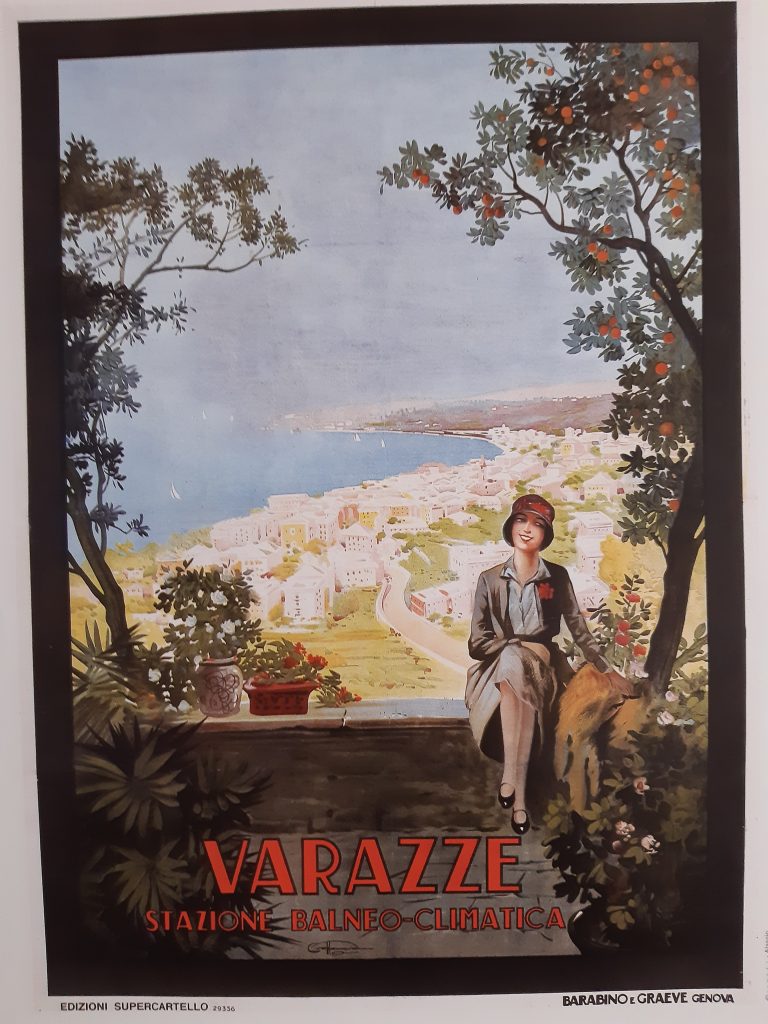
VENEZIA
PANTALONE
Pantalone è una delle maschere più longeve della Commedia dell’Arte, nasce a Venezia intorno alla metà del ‘500 e rappresenta un ricco mercante veneziano, burbero e avaro, piange sempre miseria e fa patire la fame ai suoi servi. Si intromette in dispute e litigi che non lo riguardano, sputa sentenze per sfoggiare la sua autorevolezza ma finisce puntualmente con l’avere la peggio. Il suo costume è caratterizzato da una calzamaglia rossa, una giubba rossa, un mantello nero, e da una maschera dal lungo naso a becco. Un corto spadino e la borsa contenente i denari (la scarsela) completano il suo vestiario. Stefano Rocchetta, di Bergamo, interpreta magistralmente la famosa maschera di Pantalone.
Pantalone is one of the longest-lived masks of the Commedia dell’Arte, born in Venice around the middle of the 16th century and represents a rich Venetian merchant, gruff and miserly, always crying misery and making his servants suffer from hunger. He gets involved in disputes and arguments that don’t concern him, spouts sentences to show off his authority but always ends up coming out on top. His costume is characterized by red tights, a red jacket, a black cloak, and a mask with a long beak nose. A short sword and the bag containing the money (the scarsela) complete his clothing. Stefano Rocchetta, from Bergamo, masterfully interprets the famous mask of Pantalone.
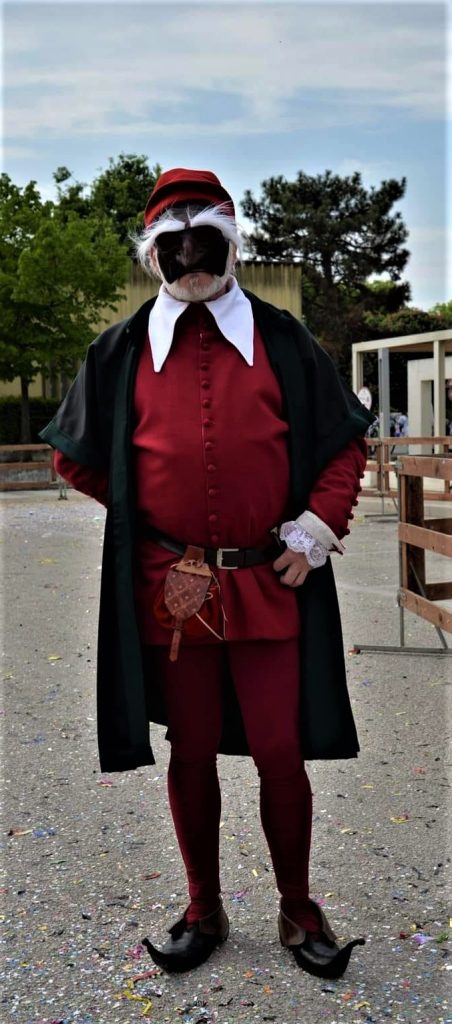
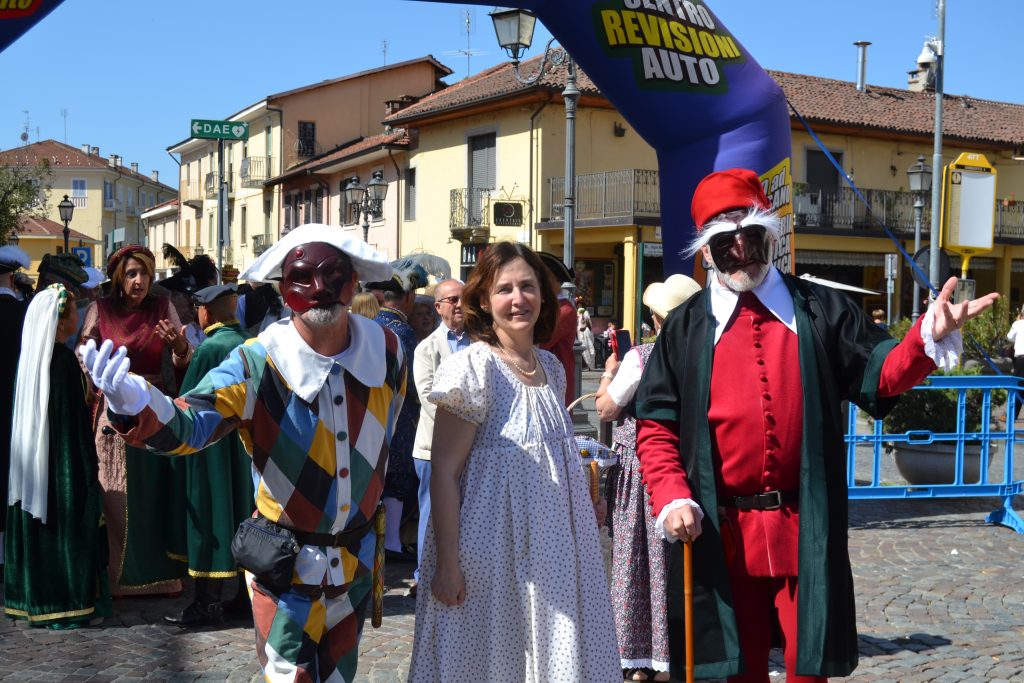
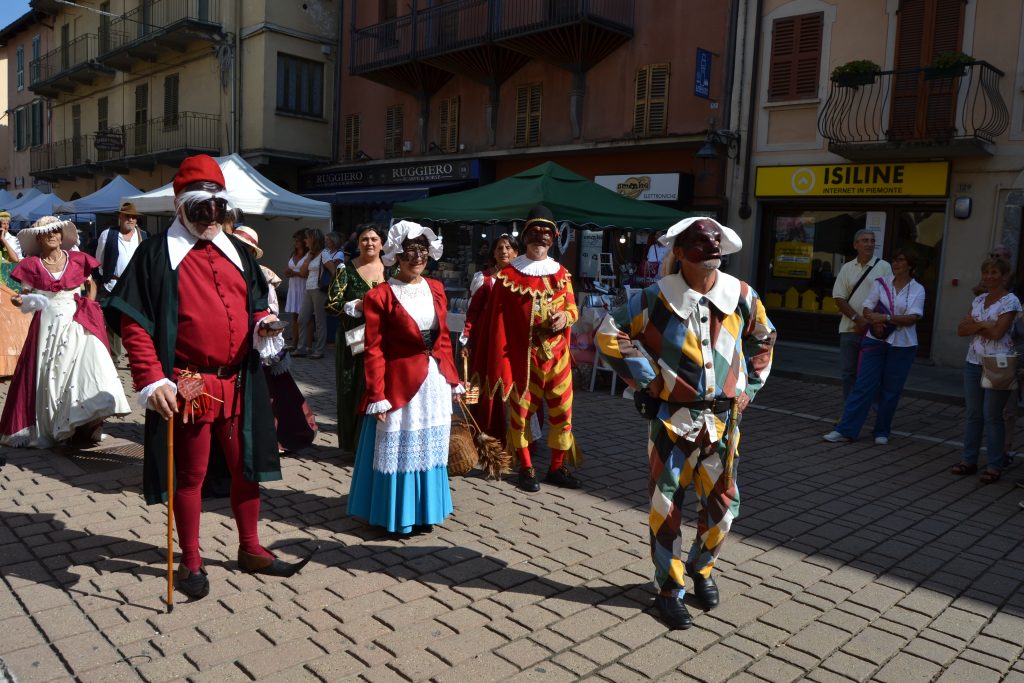
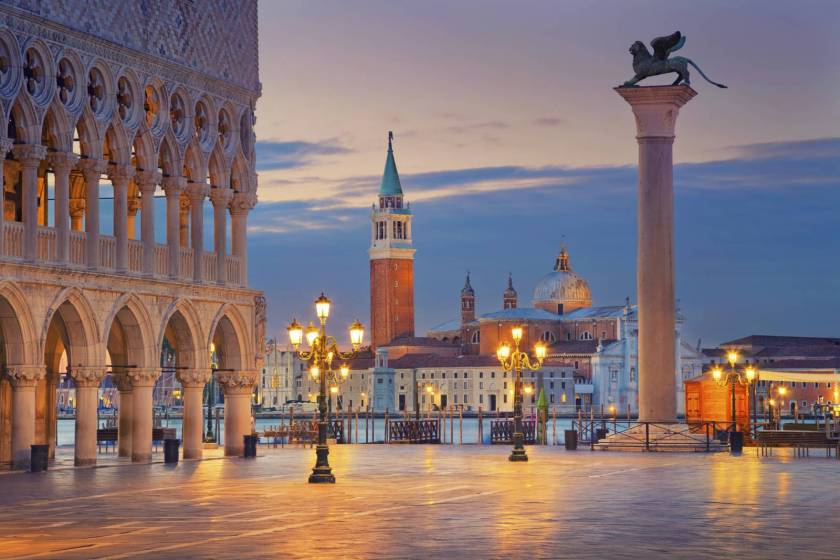
ROSAURA
Rosaura è una maschera di origine veneziana e celebre personaggio della Commedia dell’Arte risale al XVI
sec. è innamorata del giovane Florindo e grande amica della servetta Colombina.
Rosaura è figlia di Pantalone e vive con lui in un sontuoso palazzo sul Canal Grande a Venezia. La giovane è
innamorata di Florindo, ma la relazione tra i due è ostacolata da Pantalone. Rosaura ha però come complice
la cameriera Colombina che la aiuta a frequentare il giovane amato.
Chiacchierona, vivace irascibile, gelosa e vanitosa, Rosaura viene descritta con lunghi capelli biondi
adornati con nastri e fiocchi e sempre elegante.
Rosaura è presente in ben 29 commedie di Goldoni, dove conserva tutto il suo brio: solitamente però non è
figlia di Pantalone, e ama diversi uomini, non solo Florindo, che appare peraltro in un numero minore di
opere teatrali. Ha il ruolo di protagonista in due delle più note commedie del letterato veneto: la donna di
garbo, dove fa coppia con Florindo, e la vedova scaltra, dove invece il personaggio di Florindo è assente,
con la giovane donna che viene concupita da quattro spasimanti di differenti nazionalità.
Rosaura is a mask of Venetian origin and a famous character from the Commedia dell’Arte dating back to the 16th century
sec. she is in love with the young Florindo and a great friend of the servant Colombina.
Rosaura is Pantalone’s daughter and lives with him in a sumptuous palace on the Grand Canal in Venice. The young girl is
in love with Florindo, but the relationship between the two is hindered by Pantalone. However, he has Rosaura as his accomplice
the waitress Colombina who helps her to date her young lover.
Chatty, lively, quick-tempered, jealous and vain, Rosaura is described as having long blond hair
adorned with ribbons and bows and always elegant.
Rosaura is present in 29 of Goldoni’s comedies, where she retains all her verve: but usually she isn’t
daughter of Pantalone, and loves several men, not only Florindo, who also appears in a smaller number of
theatrical works. He has the leading role in two of the most famous comedies of the Venetian man of letters: La donna di
Garbo, where he is paired with Florindo, and the shrewd widow, where the character of Florindo is absent,
with the young woman who is lusted after by four suitors of different nationalities.
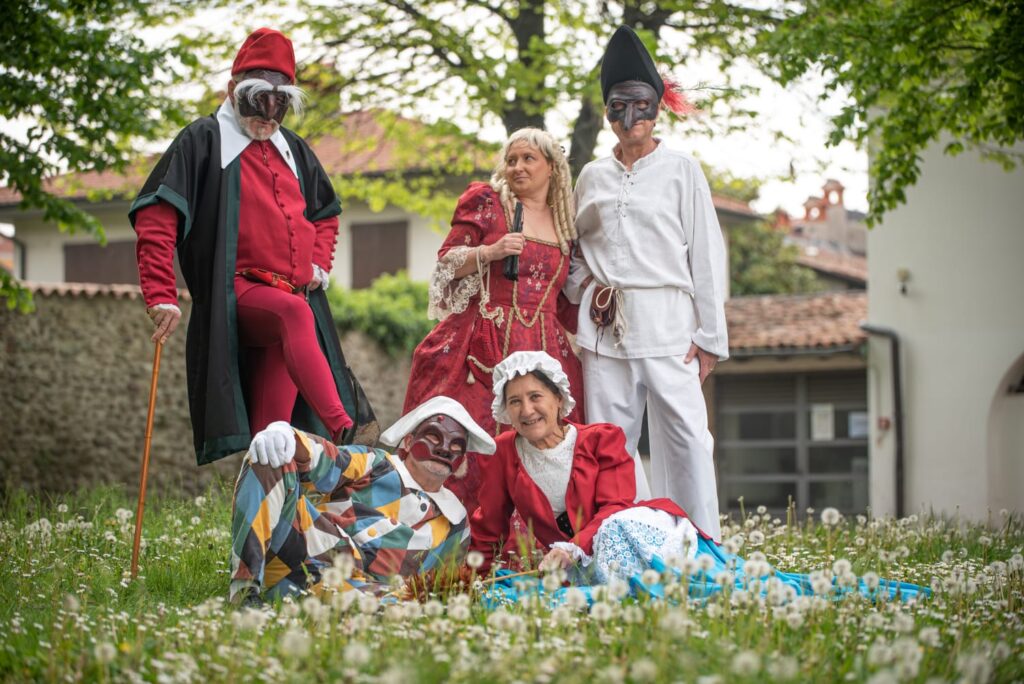
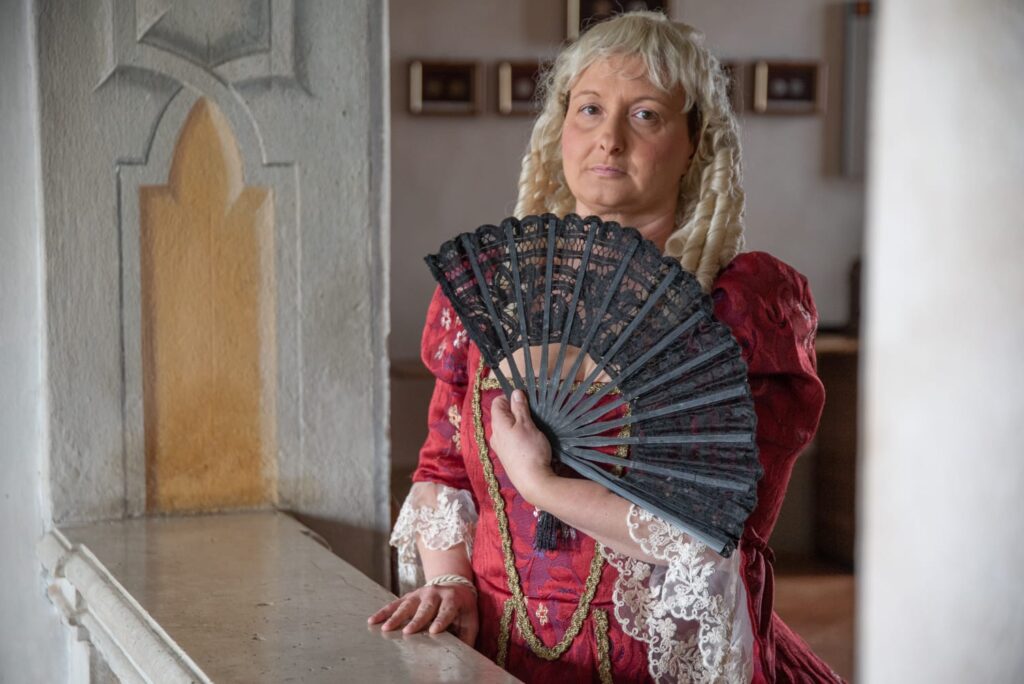
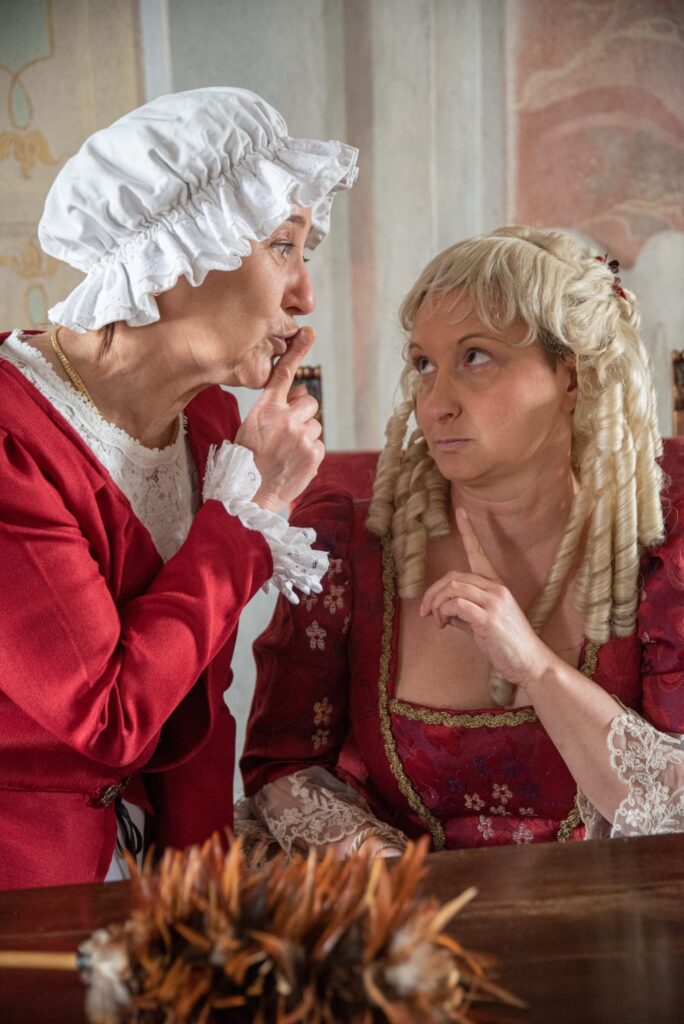
VENTIMIGLIA
IL CORSARO NERO
Il Corsaro Nero è un personaggio tratto da un romanzo di Emilio Salgari, ispirato al conte di Roccabruna, signore di Ventimiglia. I corsari, sono figure realmente esistite nel tempo, erano navigatori di famiglia nobile, che legittimati dalle monarchie, attaccavano le navi nemiche conquistandone il bottino. Nel romanzo di Salgari, il Corsaro nero, insieme ai suoi fratelli Corsaro Rosso e Corsaro Verde, partono alla volta di Tortuga e aderiscono alla Filibusta, combattendo per il Ducato di Savoia. Il Corsaro Nero solitamente veste un elegante casacca di seta nera, dei pantaloni di seta con una cintura a fascia in vita e un cappello di feltro, adorno di una lunga piuma.
The Black Corsair is a character taken from a novel by Emilio Salgari, inspired by the Count of Roccabruna, lord of Ventimiglia. The corsairs, are figures who actually existed in time, were navigators of noble families, who, legitimized by the monarchies, attacked enemy ships, conquering their loot. In Salgari’s novel, the Black Corsaro, together with his brothers Red Corsaro and Green Corsaro, leave for Tortuga and join the Filibusta, fighting for the Duchy of Savoy. The Black Corsair usually wears an elegant black silk tunic, silk trousers with a banded belt at the waist and a felt hat, adorned with a long feather.
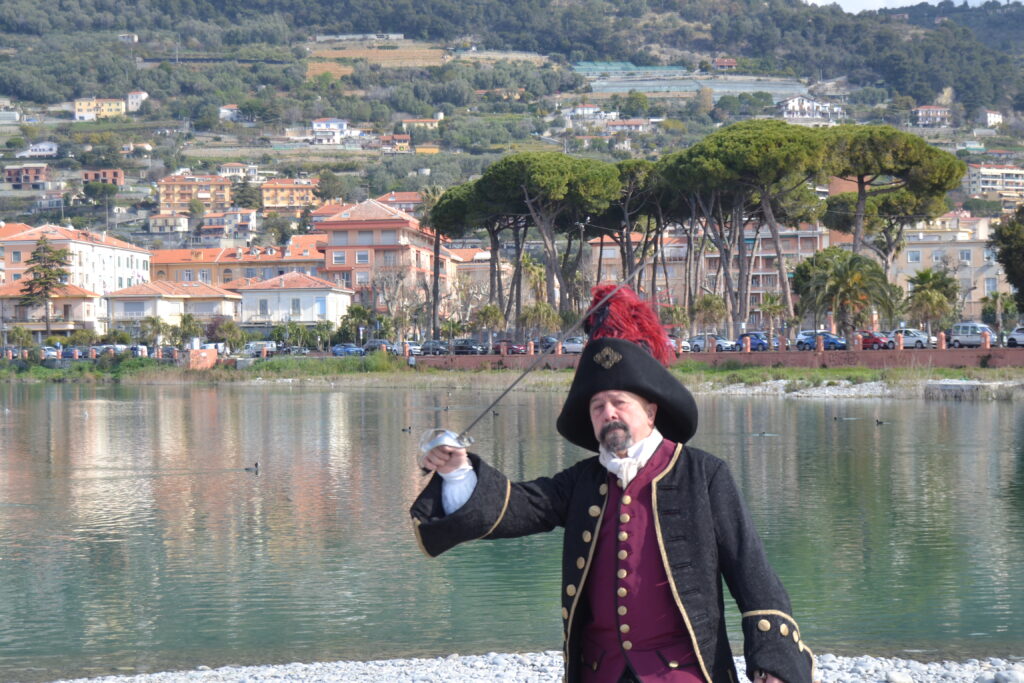
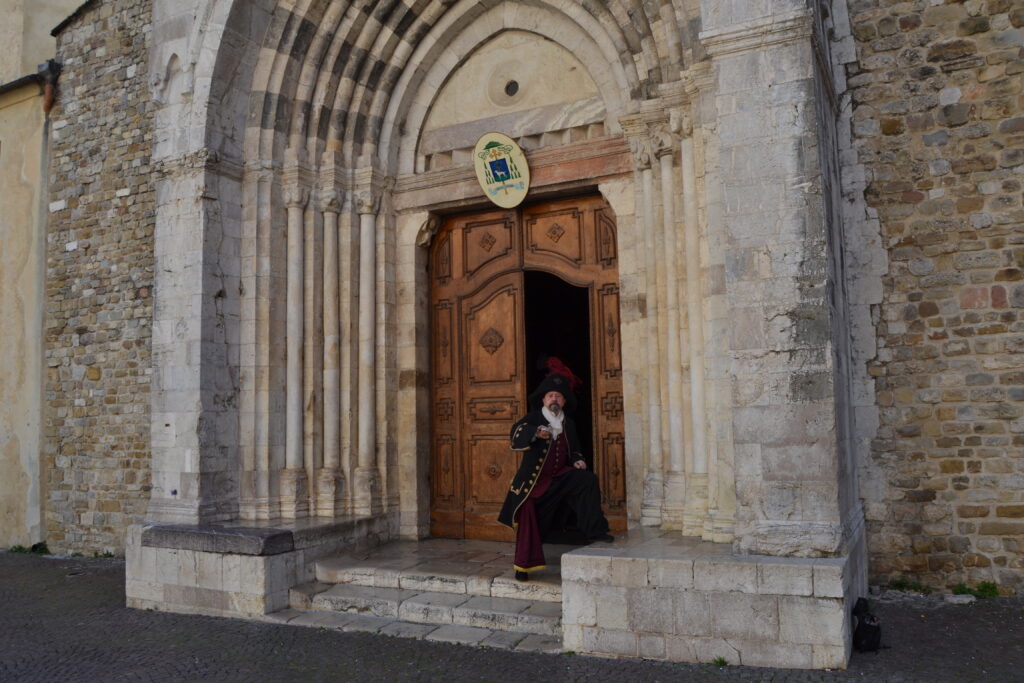
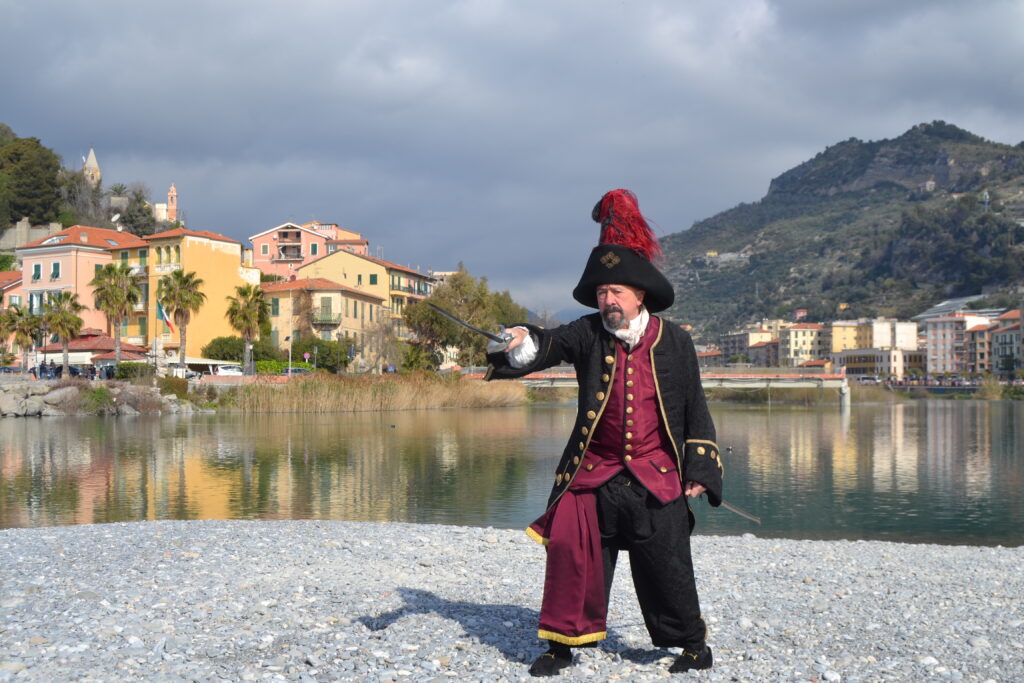
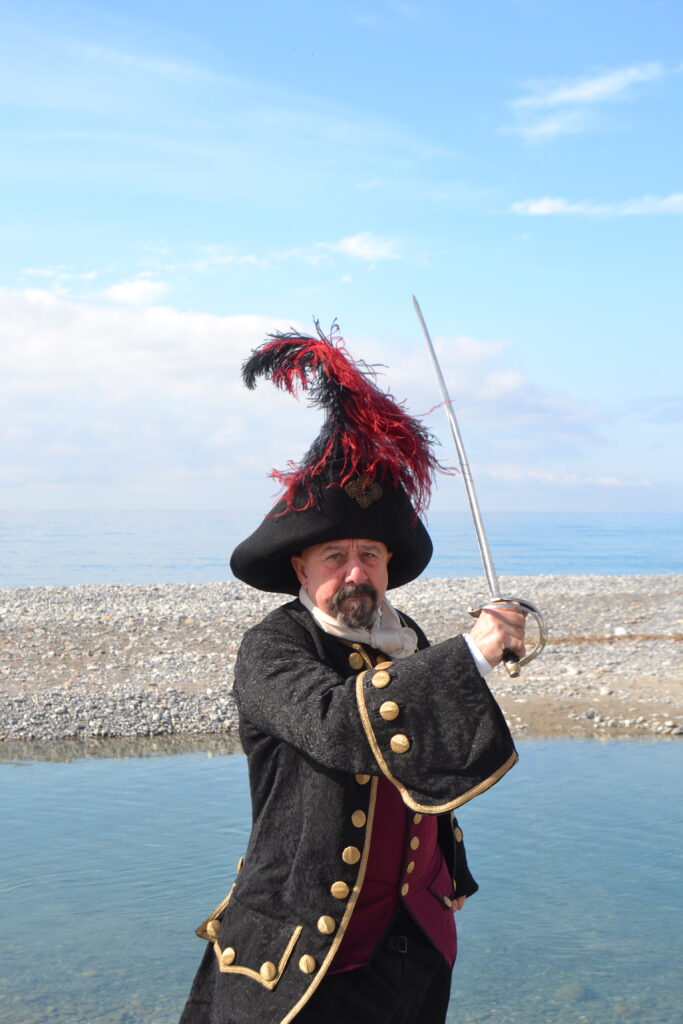
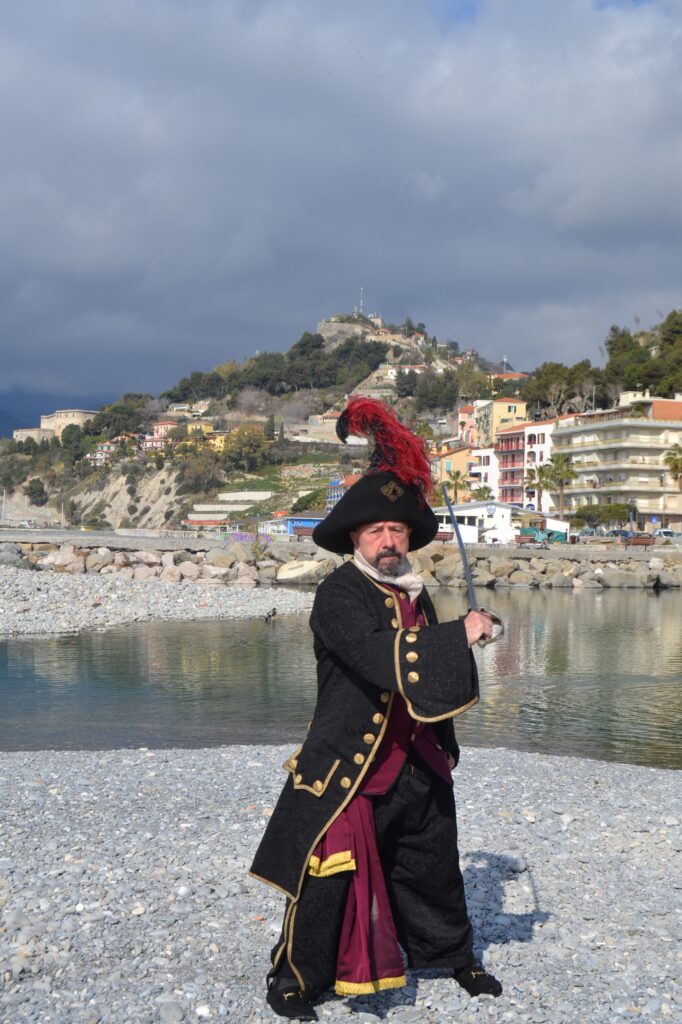
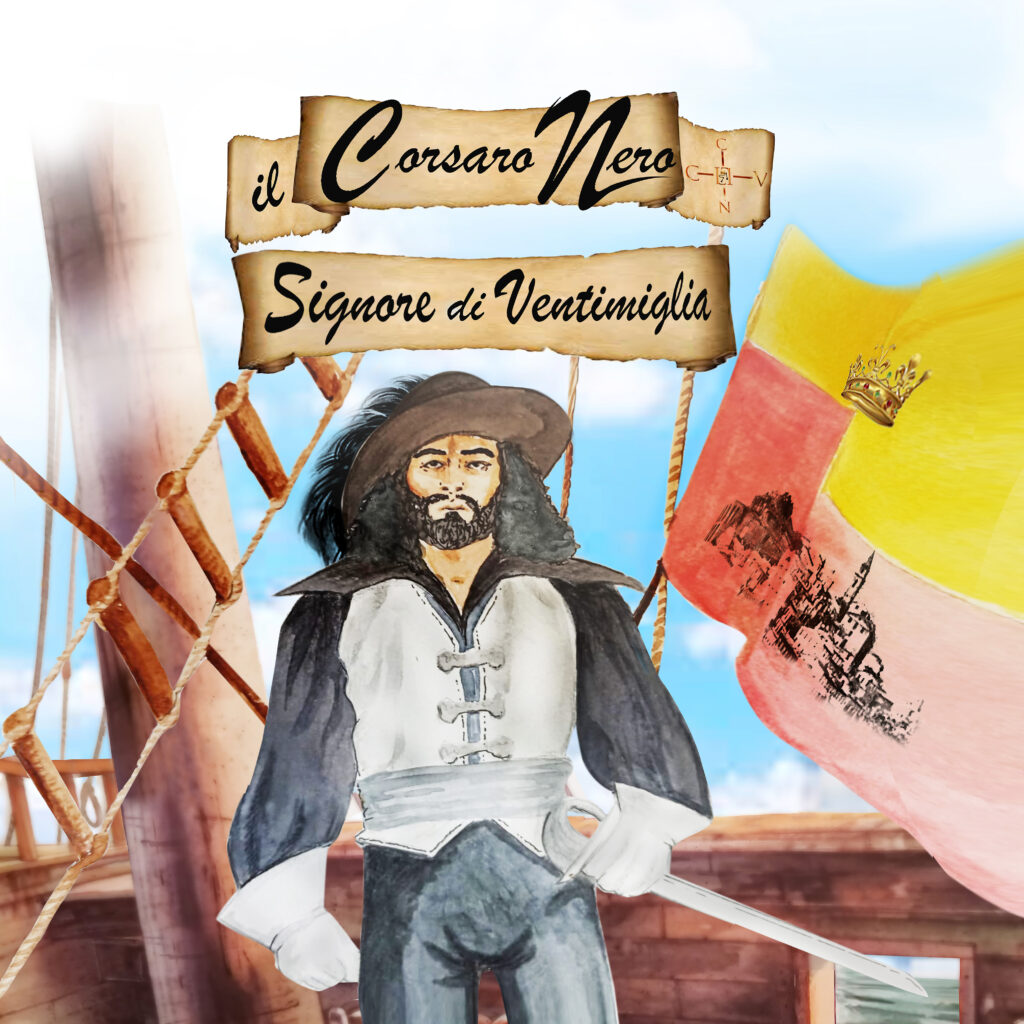

VINOVO
LA BELA POLAIERA E IL CUCAEUV
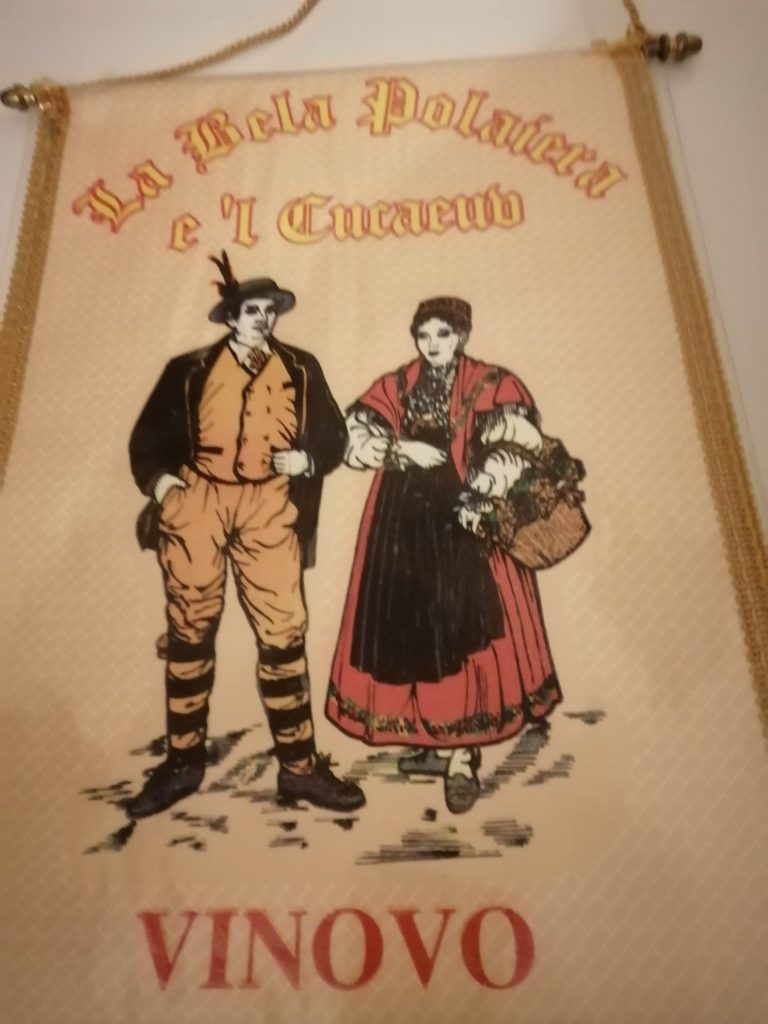
La Bela Polaiera e il Cucaeuv rappresentano la vecchia tradizione dei commerciati di Vinovo, i quali vendevano polli e uova che acquistavano nelle cascine dei vinovesi e dei paesi limitrofi. Il giorno seguente, i polli e le uova venivano portate nei vari mercati di Torino per essere venduti.
Il Cucaeuv indossa una giacca nera con vistose tasche gialle, pantaloni di velluto giallo al ginocchio, calze di lana gialle e nere; la Bela Polaiera invece indossa una gonna rossa un grembiule nero, una mantellina nera e una classica cuffietta simile a quella che portavano le donne di Vinovo nel ‘700, al braccio una cesta con delle uova sode.
The Bela Polaiera and the Cucaeuv represent the old tradition of Vinovo traders, who sold chickens and eggs that they bought in the farms of the Vinovo people and neighboring towns. The following day, the chickens and eggs were taken to the various markets in Turin to be sold.
The Cucaeuv wears a black jacket with conspicuous yellow pockets, knee-length yellow velvet trousers, yellow and black wool socks; Bela Polaiera, on the other hand, wears a red skirt, a black apron, a black cape and a classic bonnet similar to the one worn by the women of Vinovo in the 18th century, with a basket of hard-boiled eggs on her arm.
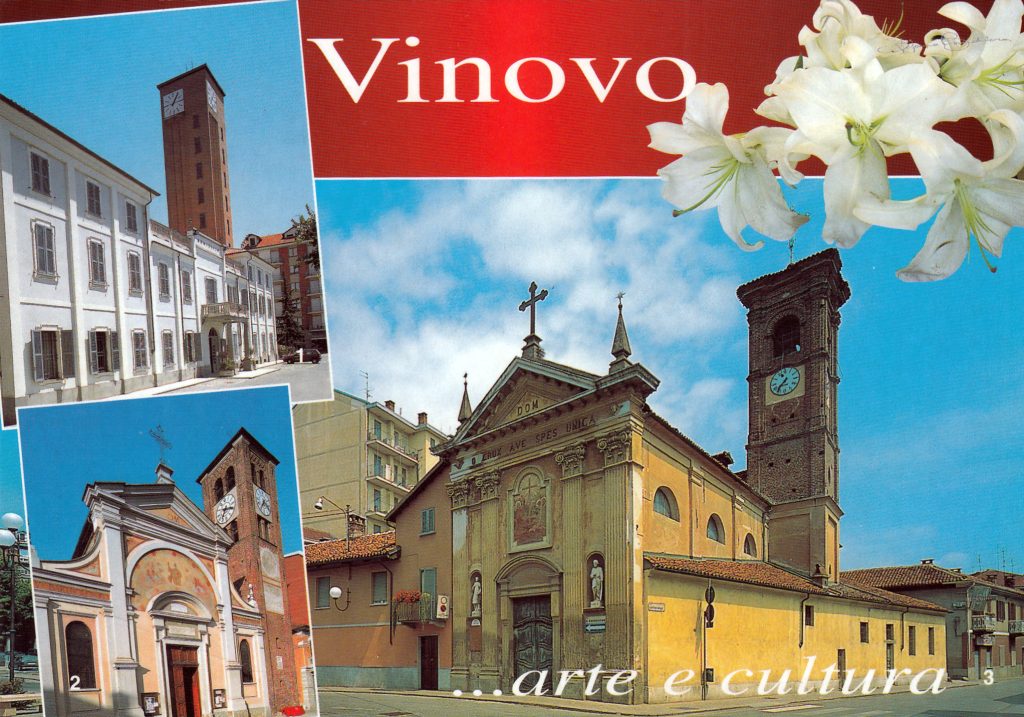
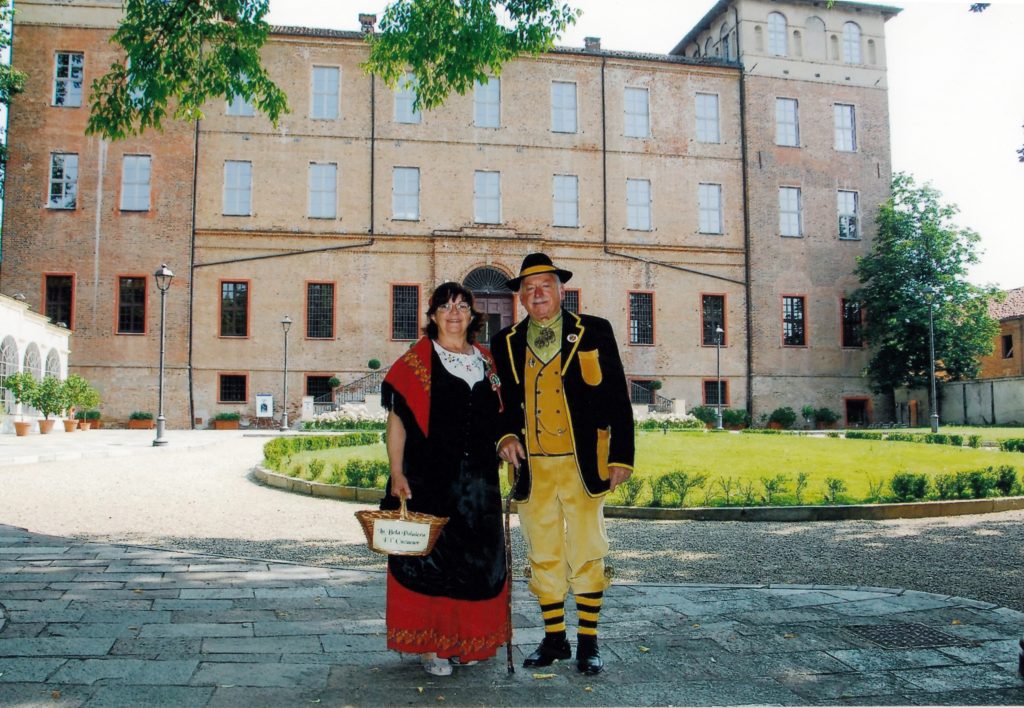
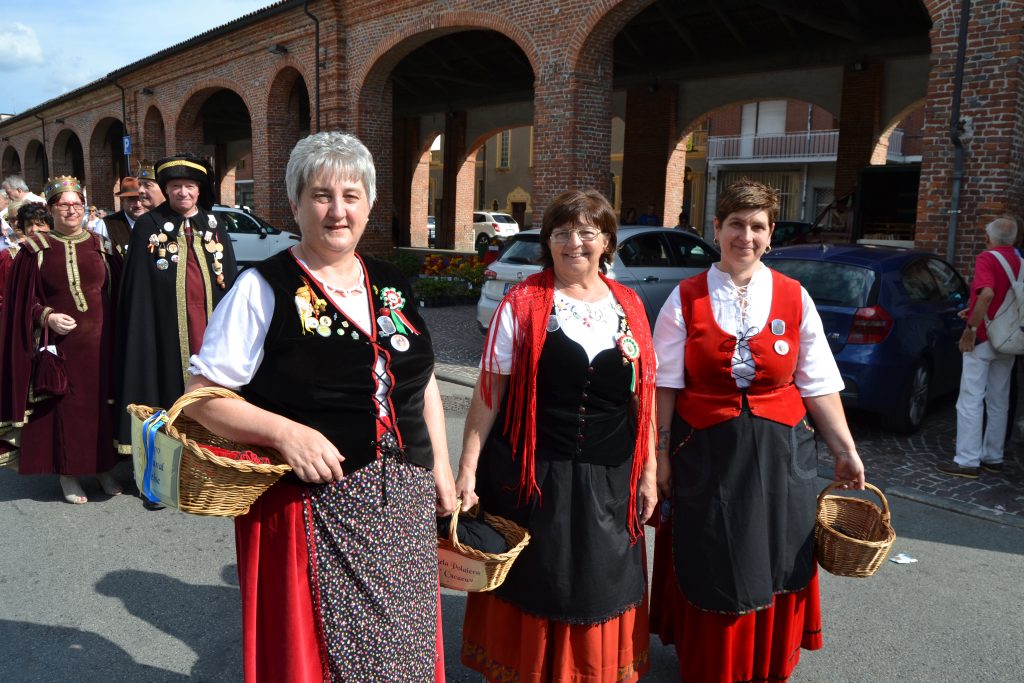
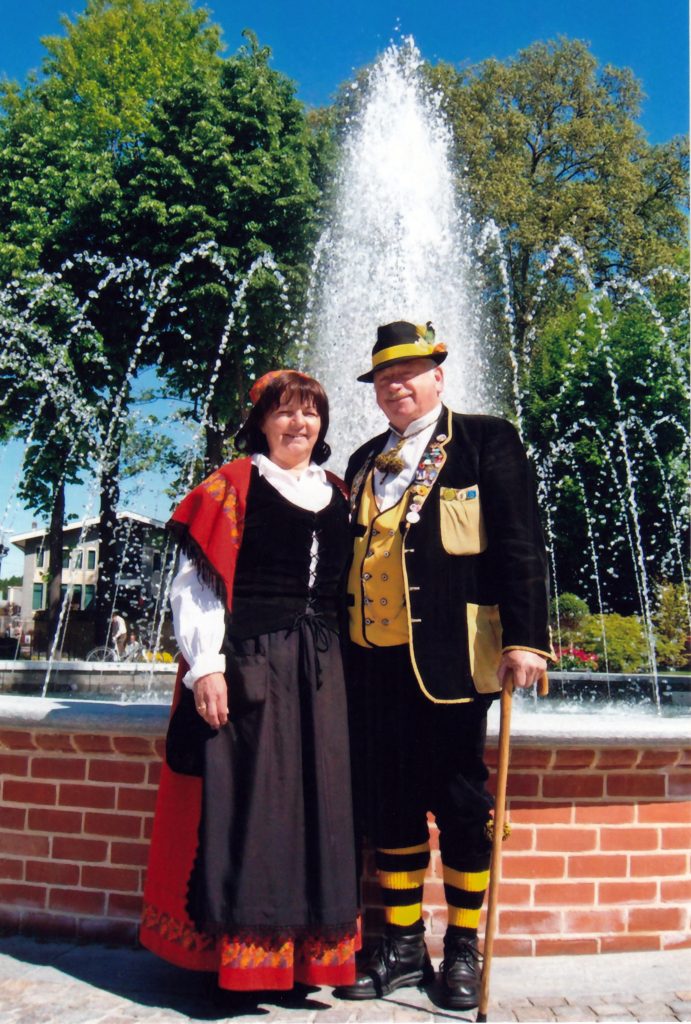
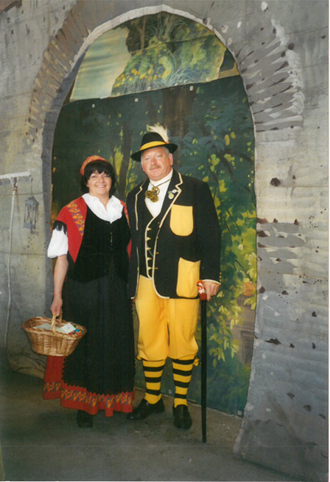
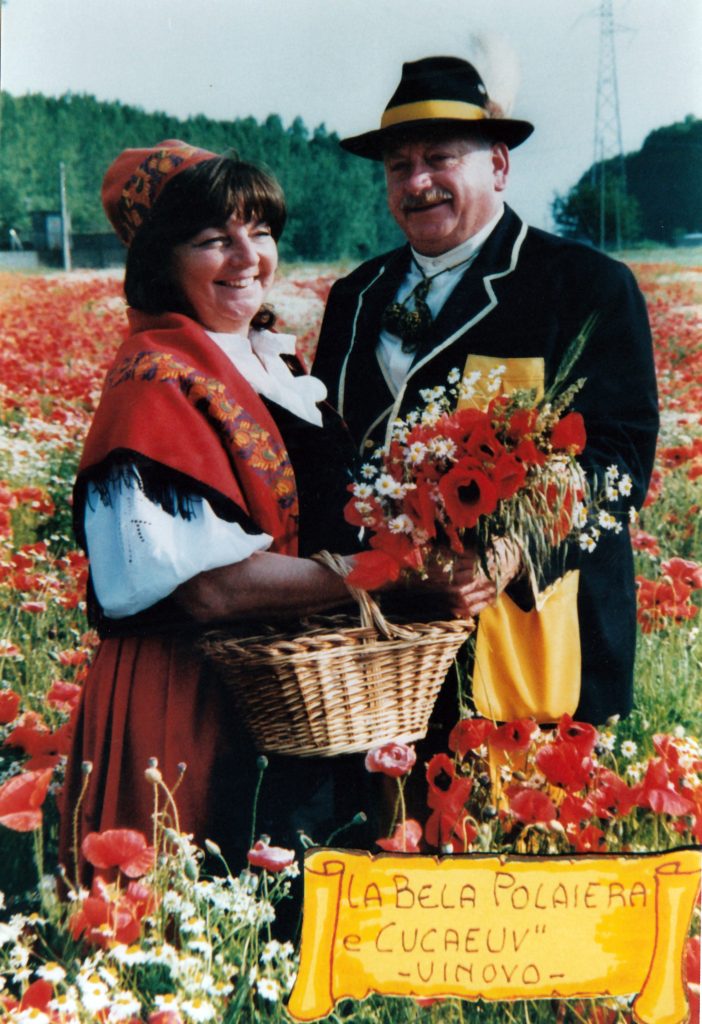
ASSOCIAZIONE AMICI DEL CASTELLO
L’associazione “Amici del Castello” nasce nel 2006 e rappresenta il Castello Della Rovere di Vinovo, un palazzo in stile rinascimentale eretto dal 1480 al 1517, di recente restauro. All’interno del castello si trovano pregevoli stucchi e dipinti a grottesca della scuola di Pinturicchio, è presente inoltre un bel chiostro con decorazioni in cotto. Dal 1775 venne avviata la produzione di maioliche e di porcellane a cui furono destinati alcuni locali. Qui ebbe sede la Regia Fabbrica di Porcellane diretta dal torinese Brodel, a cui si sostituì nel 1780 un altro torinese, il medico e chimico Vittorio Amedeo Gioanetti.
The “Amici del Castello” association was founded in 2006 and represents the Castello Della Rovere di Vinovo, a Renaissance style palace built from 1480 to 1517, recently restored. Inside the castle there are valuable stuccoes and grotesque paintings from the school of Pinturicchio, there is also a beautiful cloister with terracotta decorations. From 1775 the production of majolica and porcelain began, for which some rooms were dedicated. The Royal Porcelain Factory was located here, directed by Brodel from Turin, who was replaced in 1780 by another Turin man, the doctor and chemist Vittorio Amedeo Gioanetti.
